The monobar story
Atmospheric
Diving
Suits
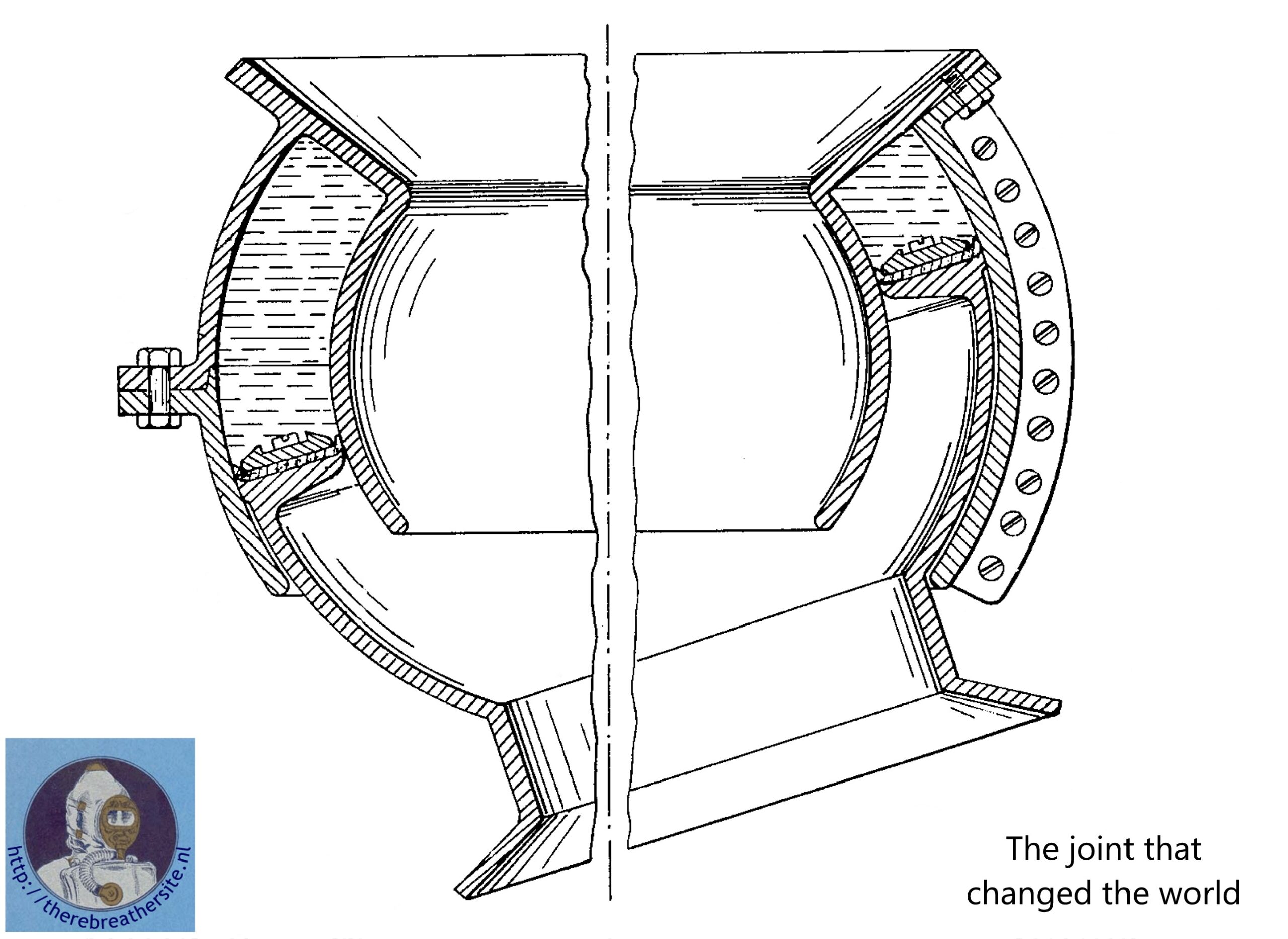
1715
John Lethbridge

John Lethbridge (1675-1759) invented the first underwater diving machine in 1715. He lived in the county of Devon in South West England and reportedly had 17 children.
1720
Jacob Rowe
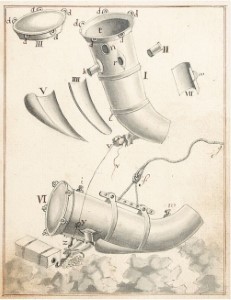
In the first half of the eighteenth century, a number of divers used the ‘barrel’ type of apparatus to salvage goods and treasure from the bottom of the sea. One of these was Jacob Rowe, a man of many parts: sea captain, engineer, inventor, author, and diver, but it is as a diver that he is now remembered.
1838
William Taylor
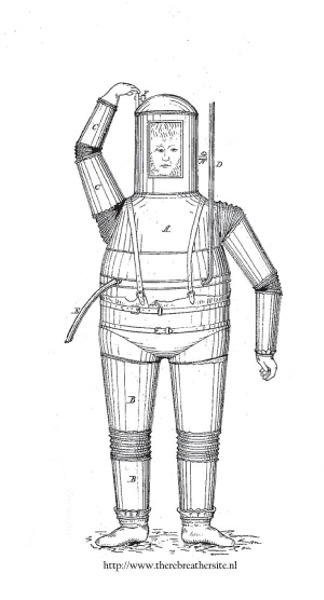
Taylor, 1838 (U.K.) – W.H. Taylor designed the first known armoured diving suit with articulating joints in 1838.
1856
Lodner D. Phillips
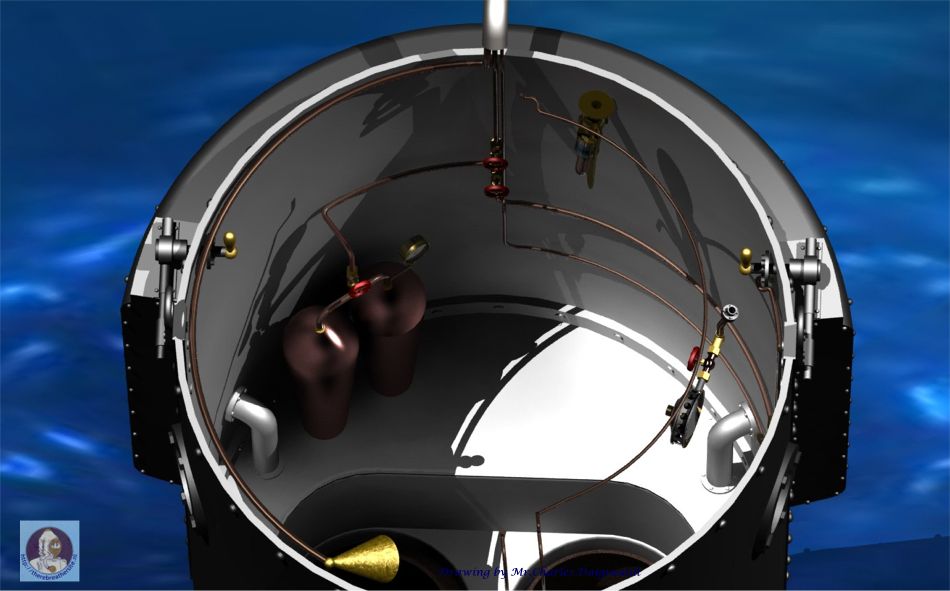
Phillips’ atmospheric diving suit was partly made of steel and partly made of cast iron.
1867
Thomas Cato McKeen

In 1867, the American, Thomas Cato McKeen, added a large back-mounted air reservoir and fabricated a rubber suit. A ingenious part of McKeen’s apparatus was the addition of a second air system to inflate the suit and bring the diver to the surface.
1870
Charles Wilson & C.F. Mudge

These two men designed and patented a very early ADS. No evidence was found it was ever actually build.
1875
Lafayette
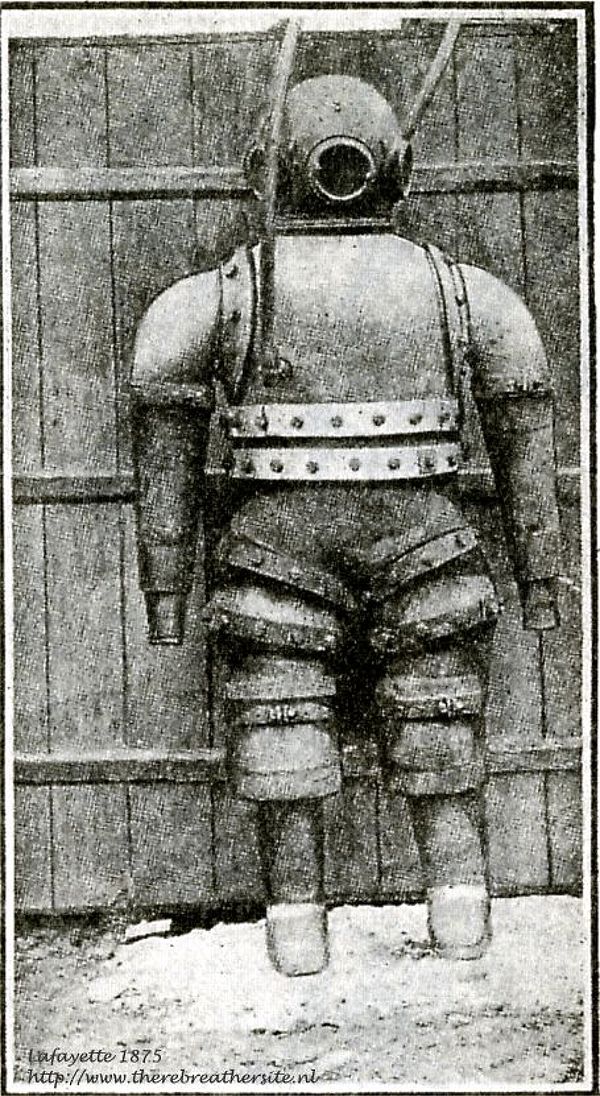
Siebe Gorman declared that a diving armour made of metal and leather was build in 1875 by Lafayette.
1881
Stephan Tasker

Tasker proposed to use a metal dress articulated with bellow joints, and to cover the whole with an external waterproof flexible dress of the ordinary pattern.
1882
Carmagnolle
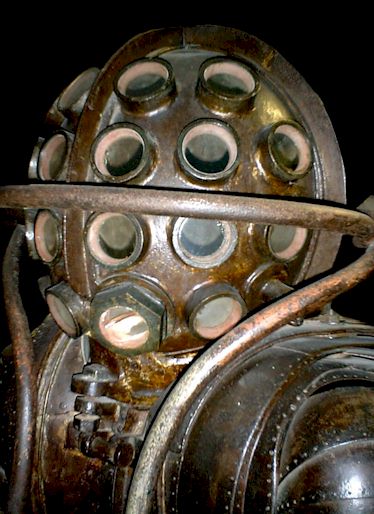
The French Brothers Alphonse and Theodore Carmagnolle build a very special atmospheric diving suit.
1889
Oliver Pelkey
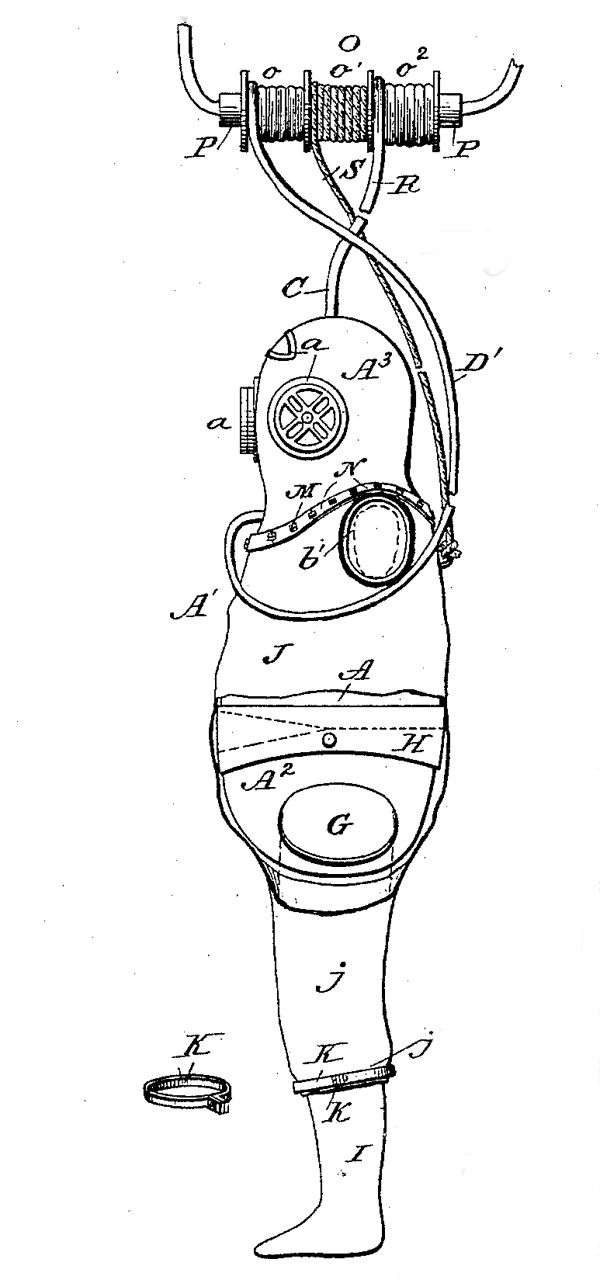
A Design patented in 1889 by Oliver Pelkey, is of little merit. It is not a completely armoured dress, the armour (in two portions) only covering the head and trunk.
1890
Arthur Hemenger
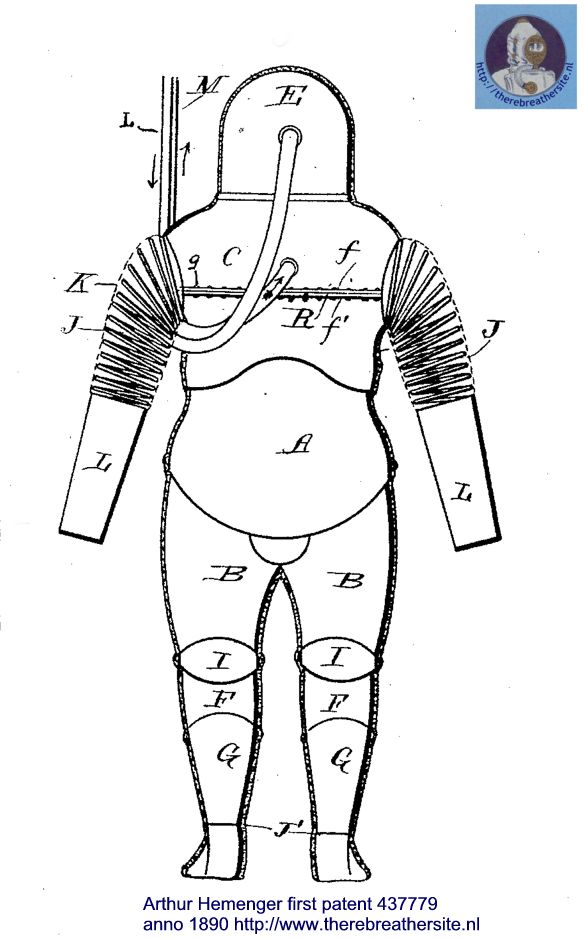
The armor is formed, however, of sheet brass, a somewhat curious material to select with steel available.
1891
William Carey

William Carey, of Southampton shows a plate suit, with ball-and-socket joints, and provision is made for easing the action of the joints by mounting them on ball or roller bearings.
1891
Boucher-Brault Filteau
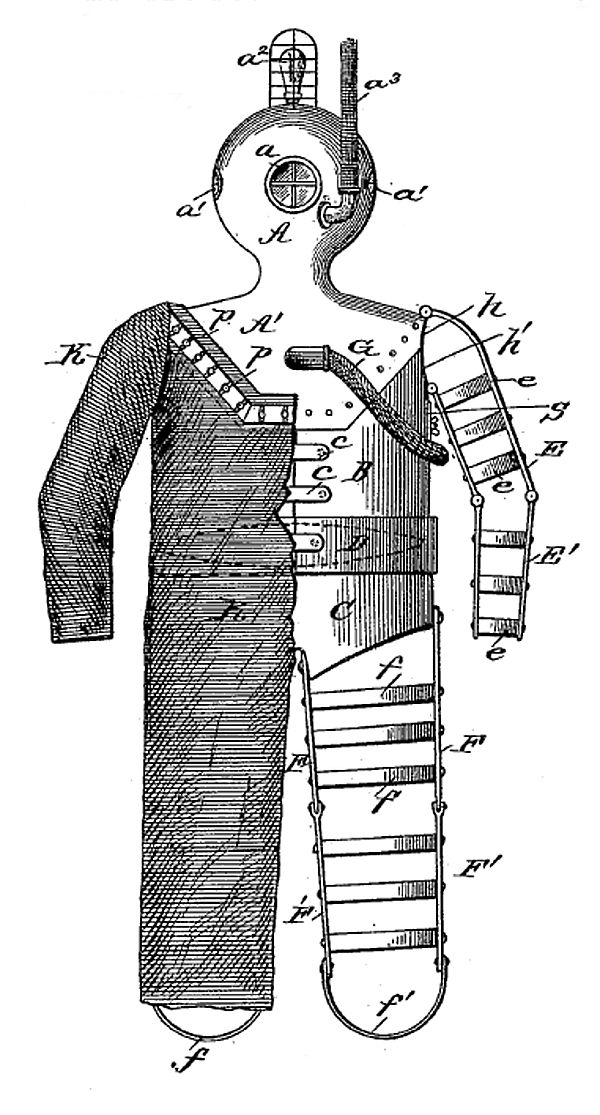
The suit consists of three pieces of armour, interlocking in the manner of a jig-saw puzzle, and covering the diver’s head and trunk.
1893
Arthur Hemenger
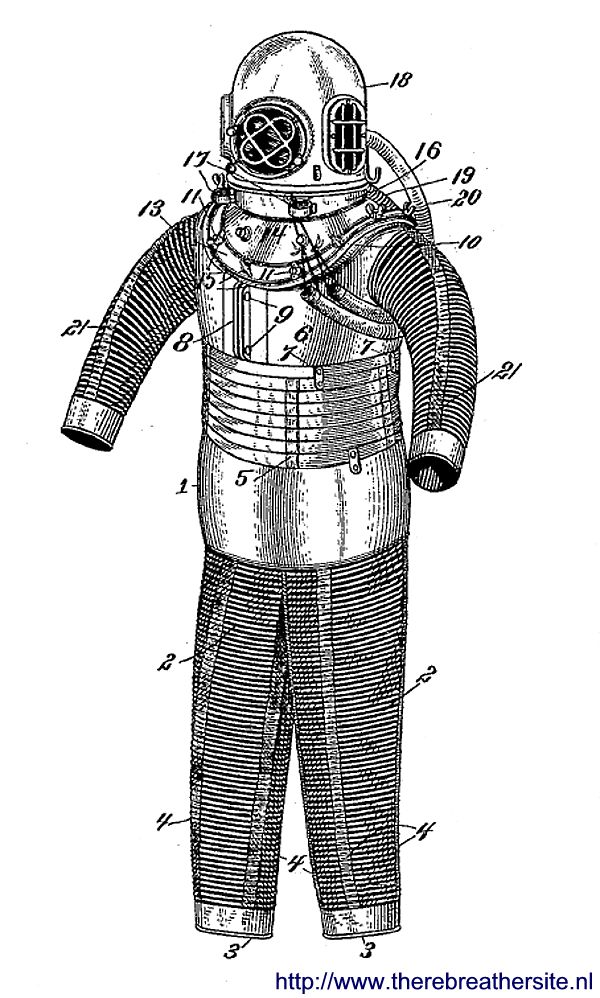
A metal casing is retained for the trunk, but both arms and legs are now covered with wire-stiffened waterproof cloth .
1894
John William McKenzie
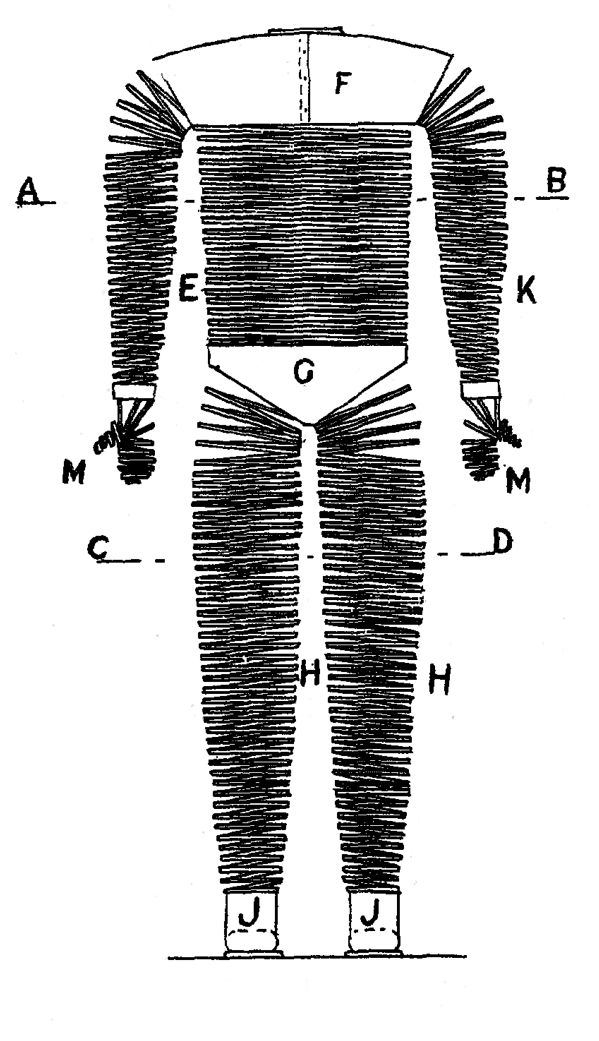
An apparatus for use in conjunction with diving dresses, the use of continuous spiral steel bands encircling the body, arms hands and legs, attached to metal shoulder, trunk and foot pieces forming a complete flexible casing capable of resisting great external pressure as described in the Specification and illustrated by drawings.
1894
Buchanan and Gordon

A deep-water diving dress of waterproof material, stiffened internally by spiral wires.
1895
John MacLeod
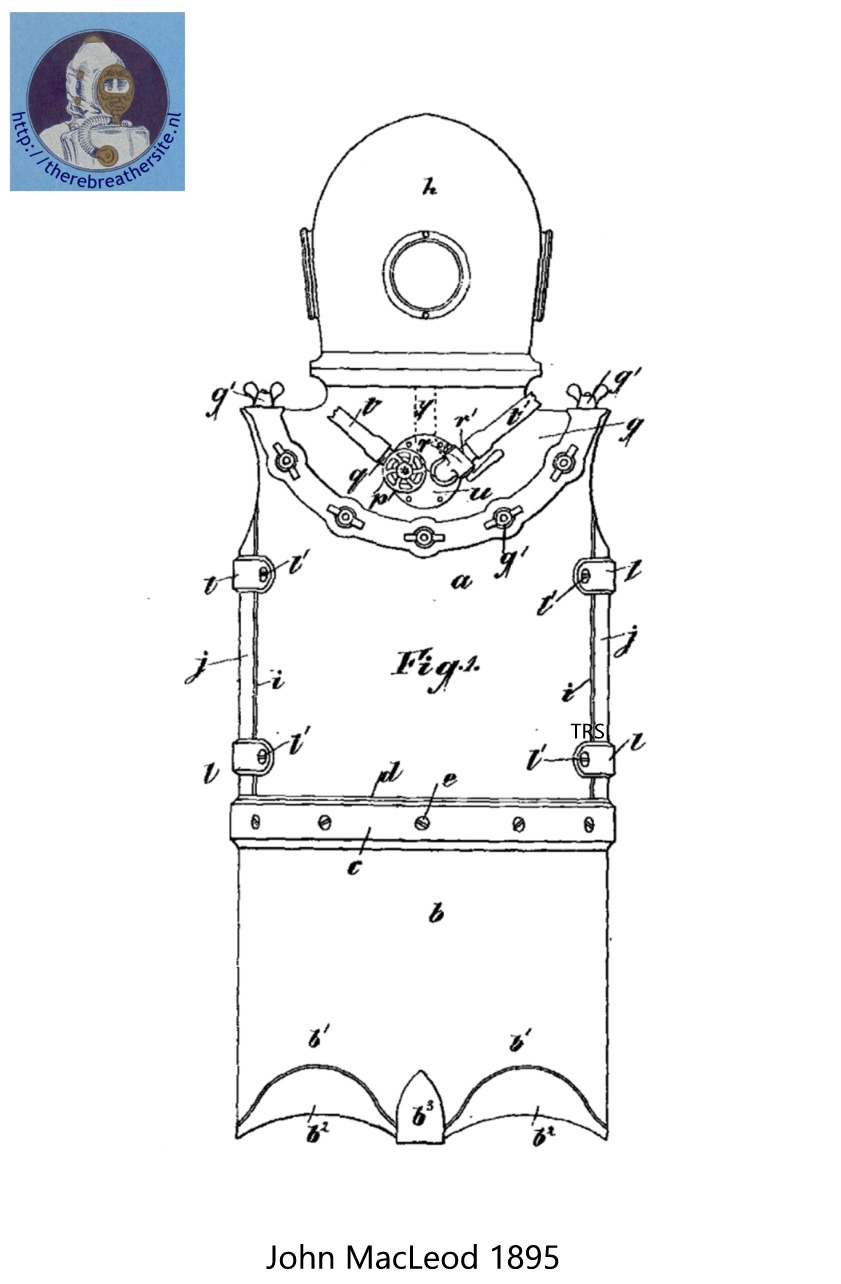
John MacLeod diver from Glascow patented his invention in 1895. His invention consists of a metal diving suit in which an upper part fits over the shoulders and on which the helmet is screwed. The chest piece connects to a metal part that fits around the legs and gives enough freedom to walk.
1895
Murray and Stuart

Murray and Stuart patented there suit in 1895. They used the old spiral technique and even used three layers to get the suit watertight.
1896
William Robert Fasey
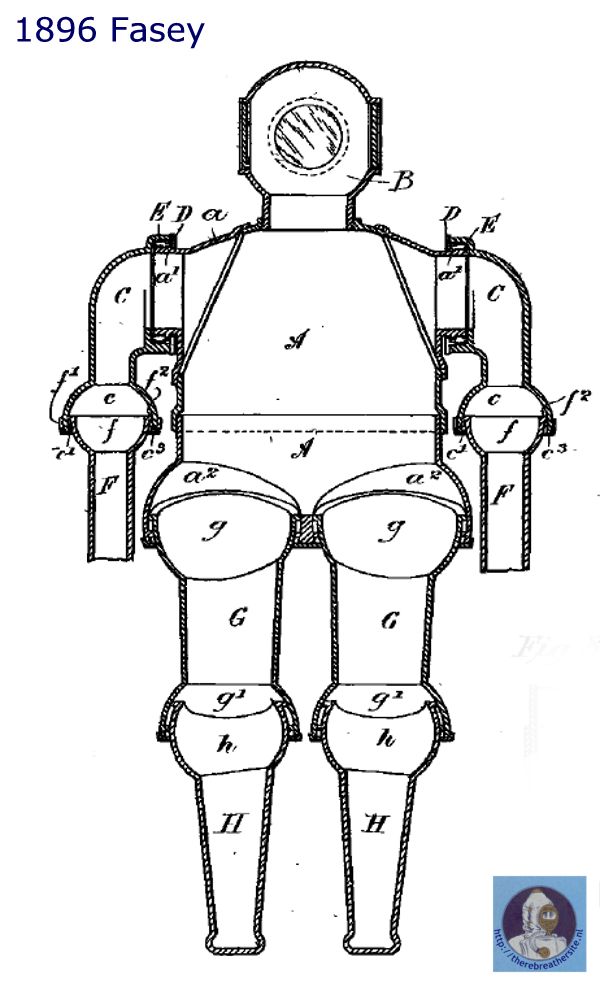
A dress proposed in 1896 by William Robert Fasey bears some resemblance to that of the Carmagnolles and to Careys. It is a plate dress with ball-and-socket joints, these being rendered watertight by leather packing.
1896
Wilhelm Becker

The Buchanan-Gordon plan appears again in a design produced by William Becker, of Paderborn, in 1896. The dress is formed of waterproof material, stiffened internally by metal rings and a complicated system of flexible lacings.
1897
Arthur McQuillan
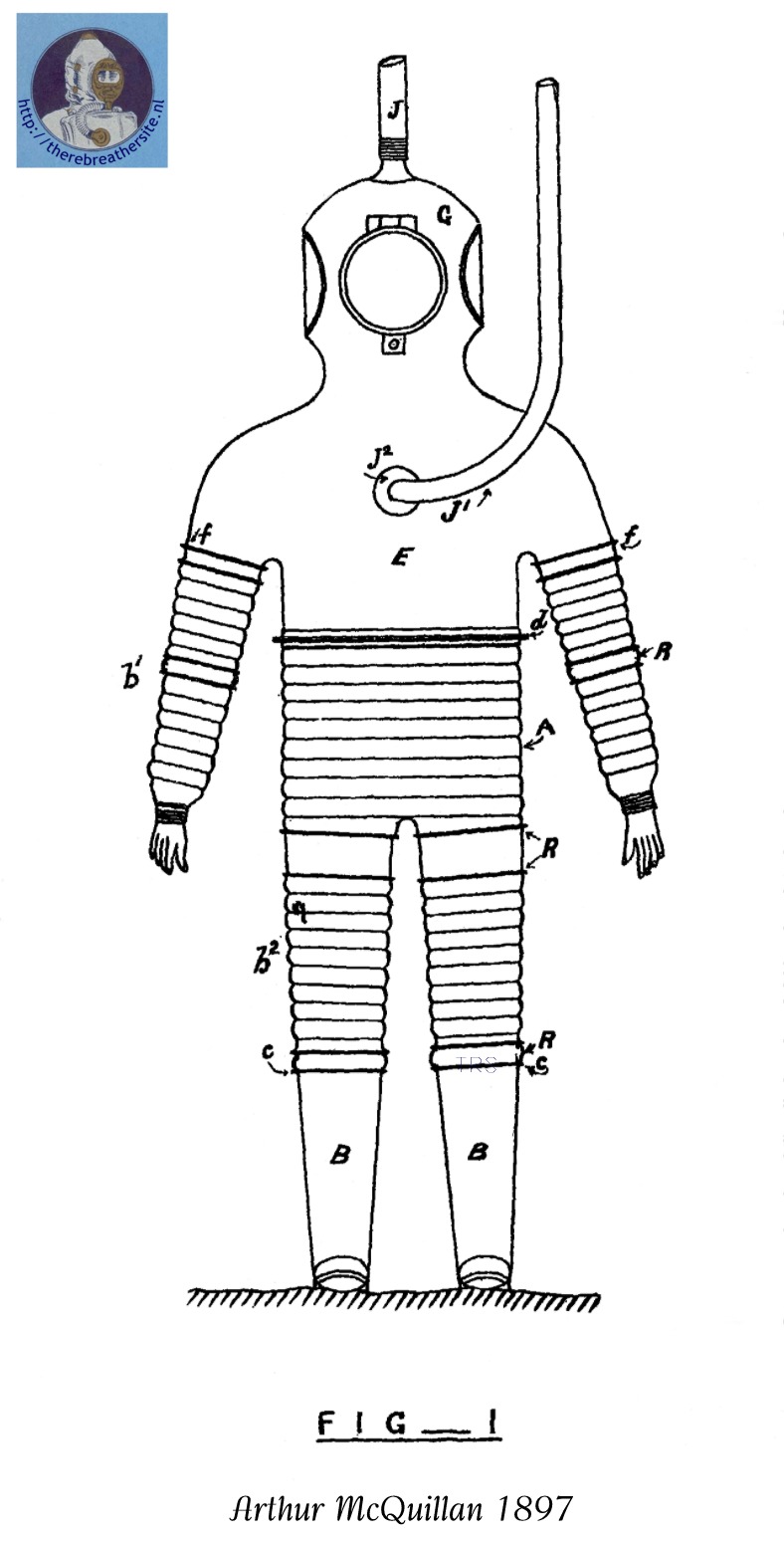
The invention of Arthus McQuillan relates to certain improvements in the mode of constructing diving dresses so as to enable them to resist the pressure incidental to deep diving, and consist essentially in providing the dress with a number of tubular rings -of iron or other suitable metal. These rings are sewn between two or more thicknesses of the material composing the dress, a sewn seam being between each ring. The dress is further provided with an external waterproof covering.
1897
Deep Sea Diving Company Limited Australia
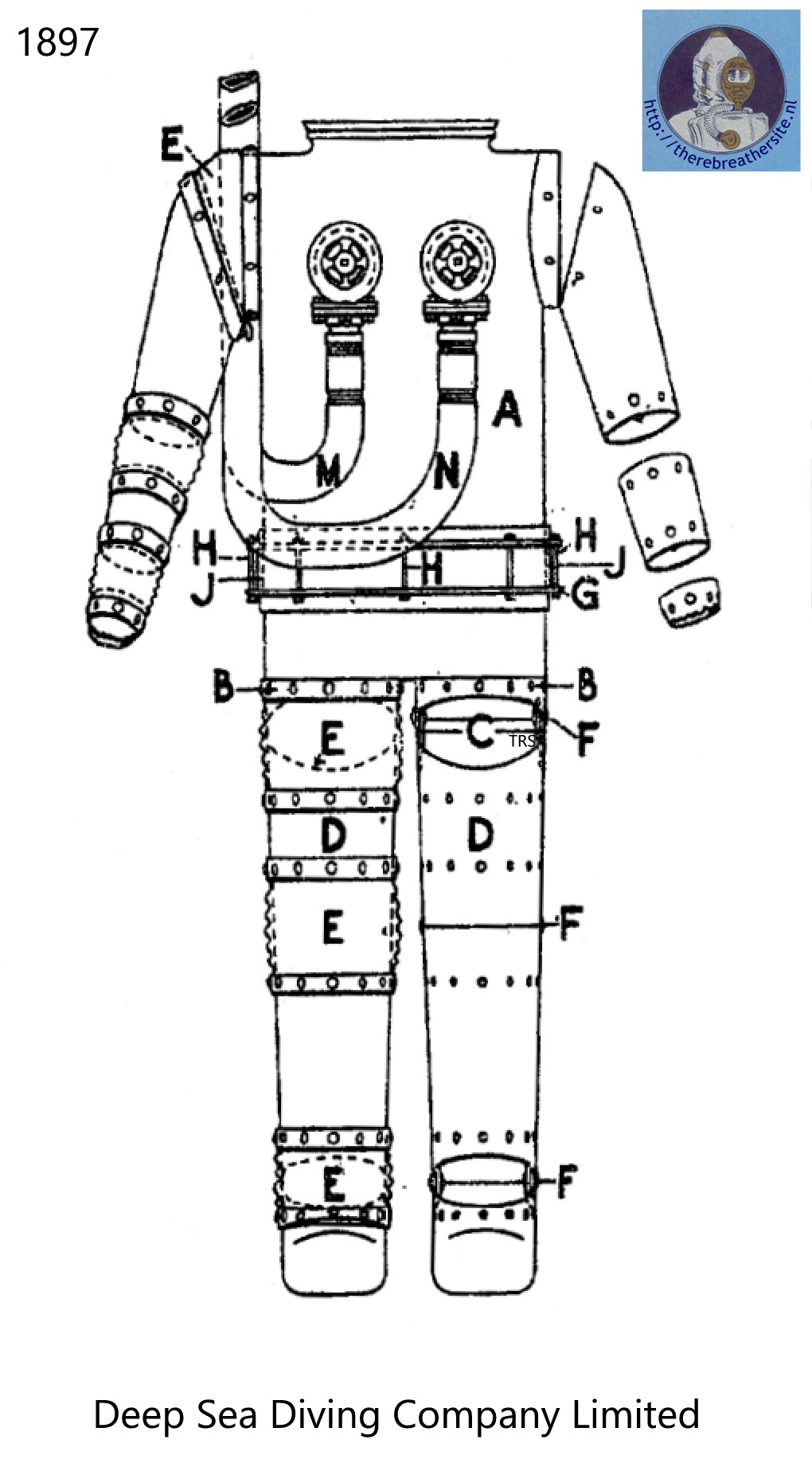
The Deep Sea Diving Company Limited from Brisbae Queensland patented an atmospheric diving suit in 1897
1897
Henry H. Gorter ball joint
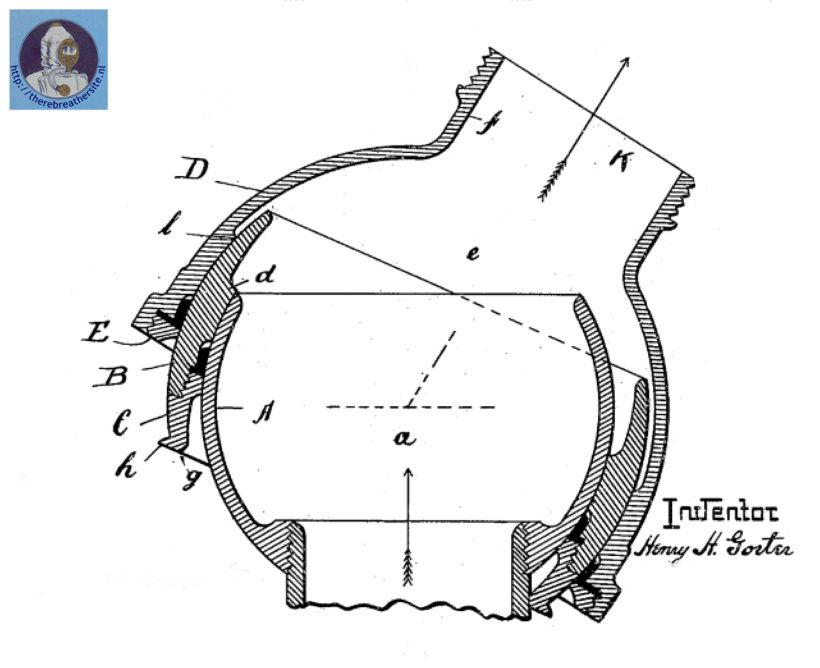
As early as 1897, Henry Gorter patented the first ball and socket joint, which was later used in many atmospheric diving suits.
1897
Alexander Gordon

In 1894 Buchanan and Gordon patented a diving dress. A later patent, taken out by Gordon alone, embodied various improvements in the fastening of the flexible material to the standing portions of the dress, such as the helmet; and it also provided for the use of jointed radius-rods running along the sleeves and trousers to prevent them from collapsing under pressure, while leaving them free to flex.
1897
John and George Day
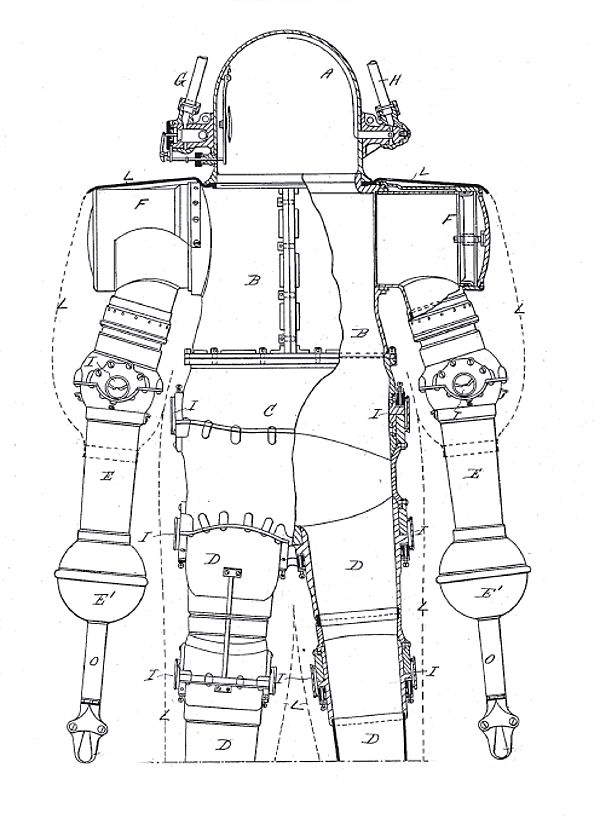
A very carefully designed dress was suggested in 1897 by John and George Day, of Maesteg, South Wales. The design provides for a completely armoured dress with ball-and-socket joints, kept watertight by “a suitable packing”.
1897
James Baker Pollard

Very Little is known about the suit James Baker Pollard from Roanoke State of Virginia patented in 1897. His patent 587604 describes a diving suit or armor with a metallic head section, a flexible shoulder section and a metallic trunk section.
1898
James J. Devine
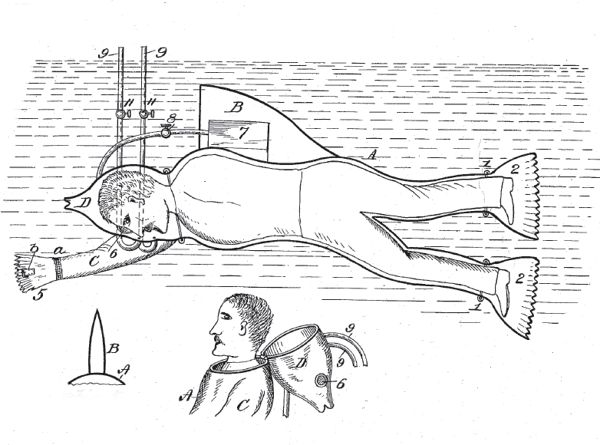
James J Devine patented a diving suit with a fish-like appereance. The main purpose was to transport a “torpedo” underwater.
1902
Enos B. Petrie USA
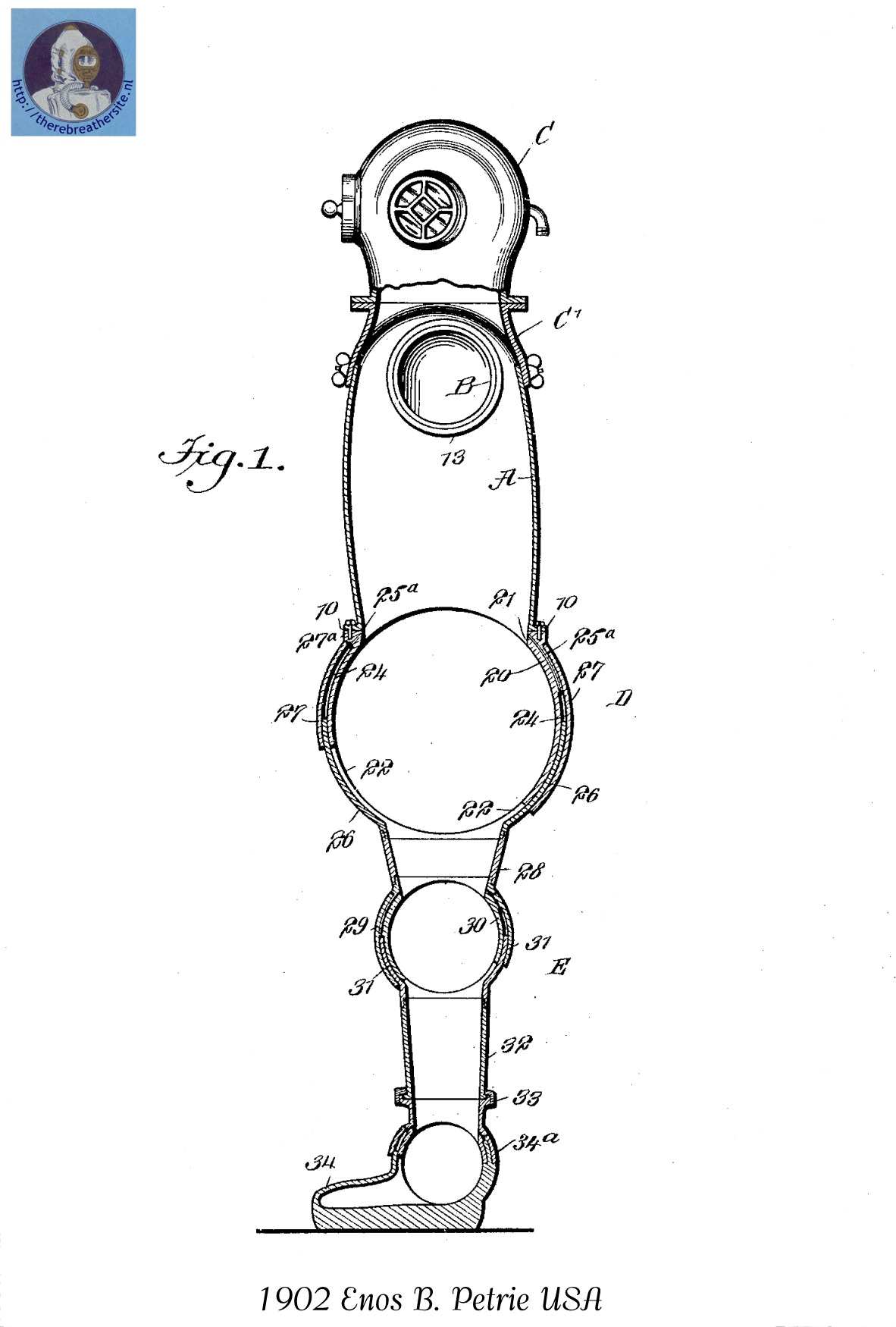
Petrie’s patent focuses on the freedom of movement of the joints. To this end, he provides the joint with a ventilation channel to the inside of the suit. He does not specifically address the issue of making the joints waterproof, and therefore writes that the suit should preferably be lined with a rubber suit.
1903
John L Watson
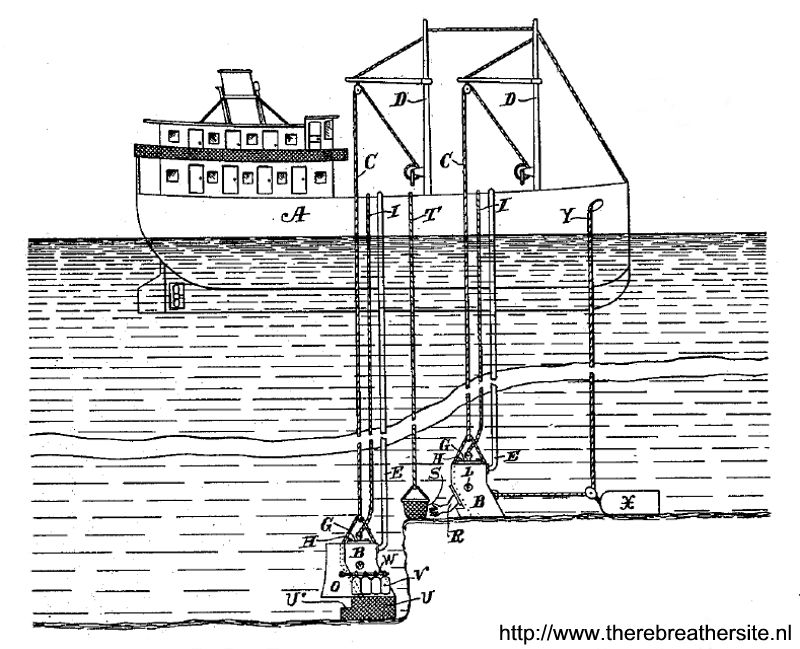
John Watson designed a diving bell with some interesting futures. The diving bell was equipped with a toolbox placed on the outside of the bell. Also Watson made an escape system for the diver.
1903
Alphonse Carmagnolle (dit Karl)
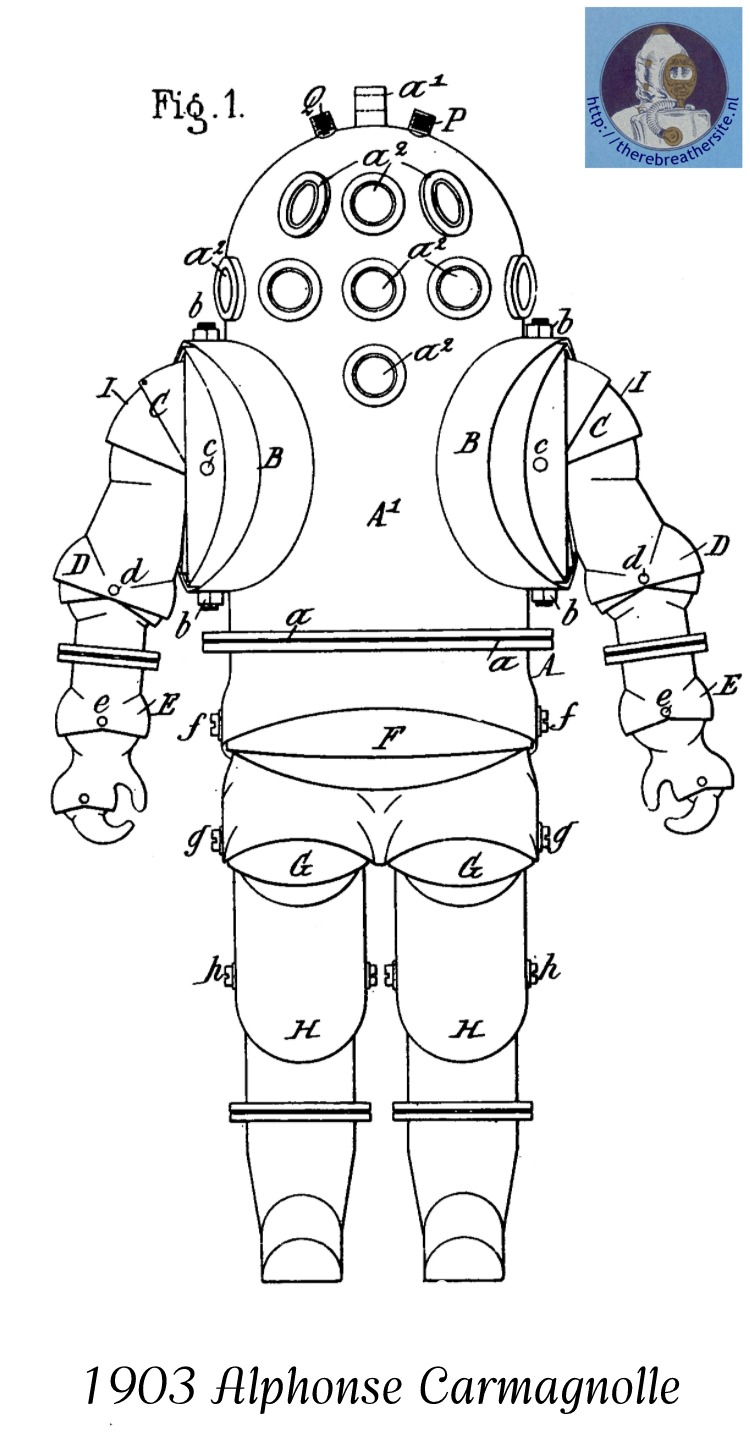
The Carmagnolle brothers (Theodore and Alphonse) already in 1882 built the world famous diving suit with a large number of viewing windows similar to this patent. However, the construction differs from the suit that was patented by Theodore in 1903. It is remarkable that probably also in 1882 the joints had to be covered with a waterproof material to prevent leakage.
1903
Wichmann und Zopke

Spiral wire armouring makes its appearance yet again in a design by Wichmann and Zopke in 1903.
This proposes to encircle the diver’s trunk and tights with flat steel spiral bands drawn tight by a handle-operated ratchet.
1904
Joseph von Miniszewski

Miniszewski patented an atmospheric device in 1904 that is not actually anthropomorphic and does not belong in this list. The idea looks very much like a submarine. The patent shows that the ball contains a mechanism for propulsion and valves with an air reservoir for raising and lowering the ball. An unusual design of which it is unknown if it has ever been executed.
1904
Jean Claude Malatray France
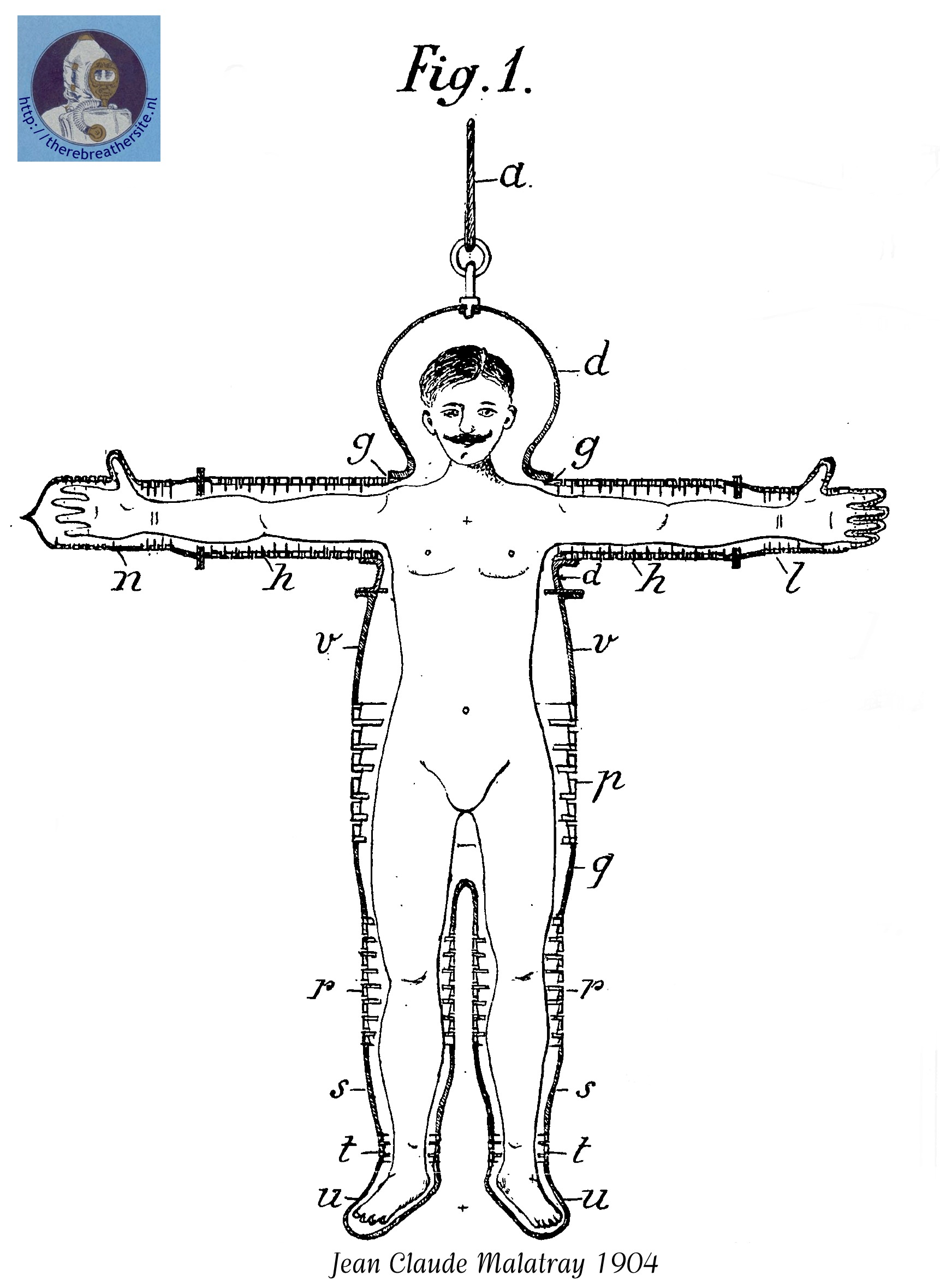
The diving suit covered by the invention enables the diver to descend to very great depths and to carry out the necessary movements. It consists of an all-metal armour which protects all parts of the diver’s body; this armour is made up of certain rigid parts and other parts which are hinged; the latter are made watertight by means of appropriate attachments.
1904
Jaques Franc et Eugene Galaup
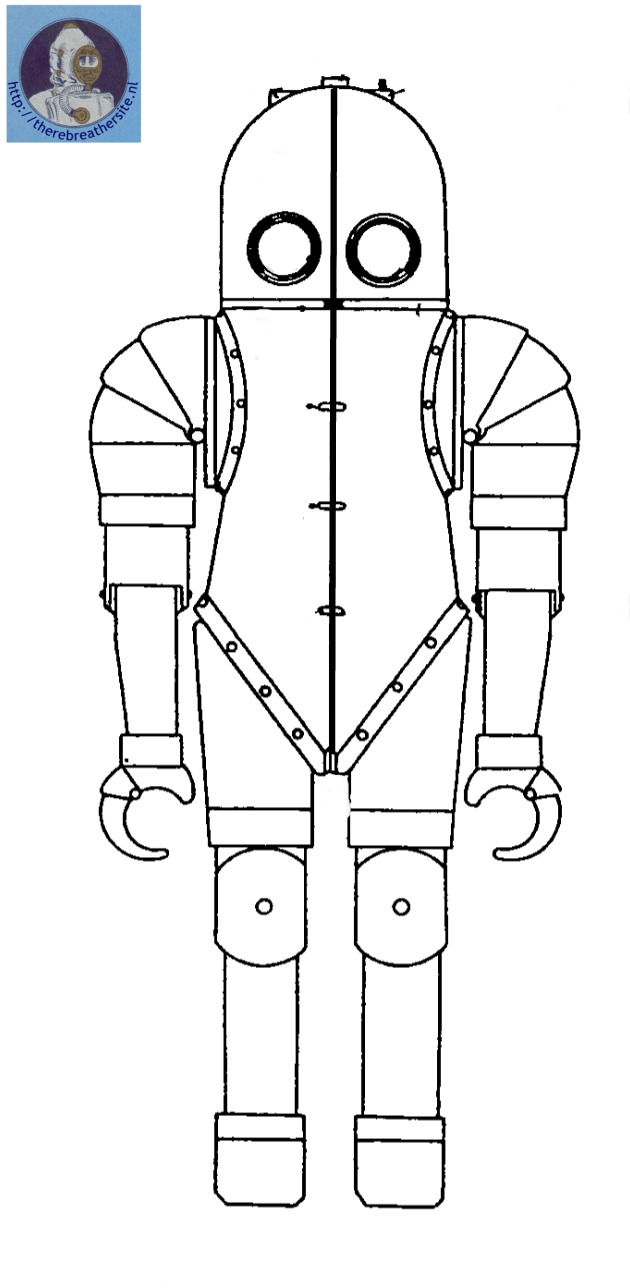
The diving suit, the object of the invention, is an apparatus designed to protect divers against the pressure of the water mass when they descend to great depths. In ordinary diving suits, the air, forced into the suit at a higher pressure than that exerted by the water outside, causes great fatigue of the lungs, sometimes even asphyxiation. The new suit overcomes these disadvantages.
1904
Petrie and Martin
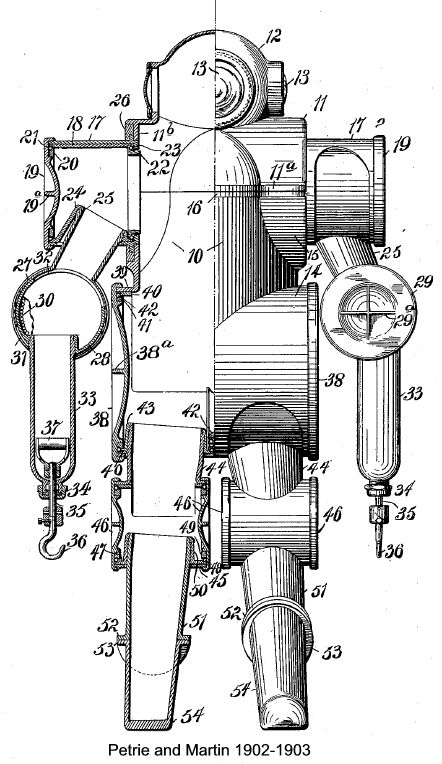
Enos B. Petrie, of U.S.A., designed in 1902 an armoured dress having ball-and-socket joints of a somewhat peculiar type. The “socket” portion of the joint was double, and passed on either side of the “ball” shell. The friction of such joints would be considerable. At the shoulders, annular joints were used, kept watertight by leather packing-rings. It was proposed that the whole dress should be enclosed in a rubber envelope.
1904
Petrie and Martin build in Waterpump
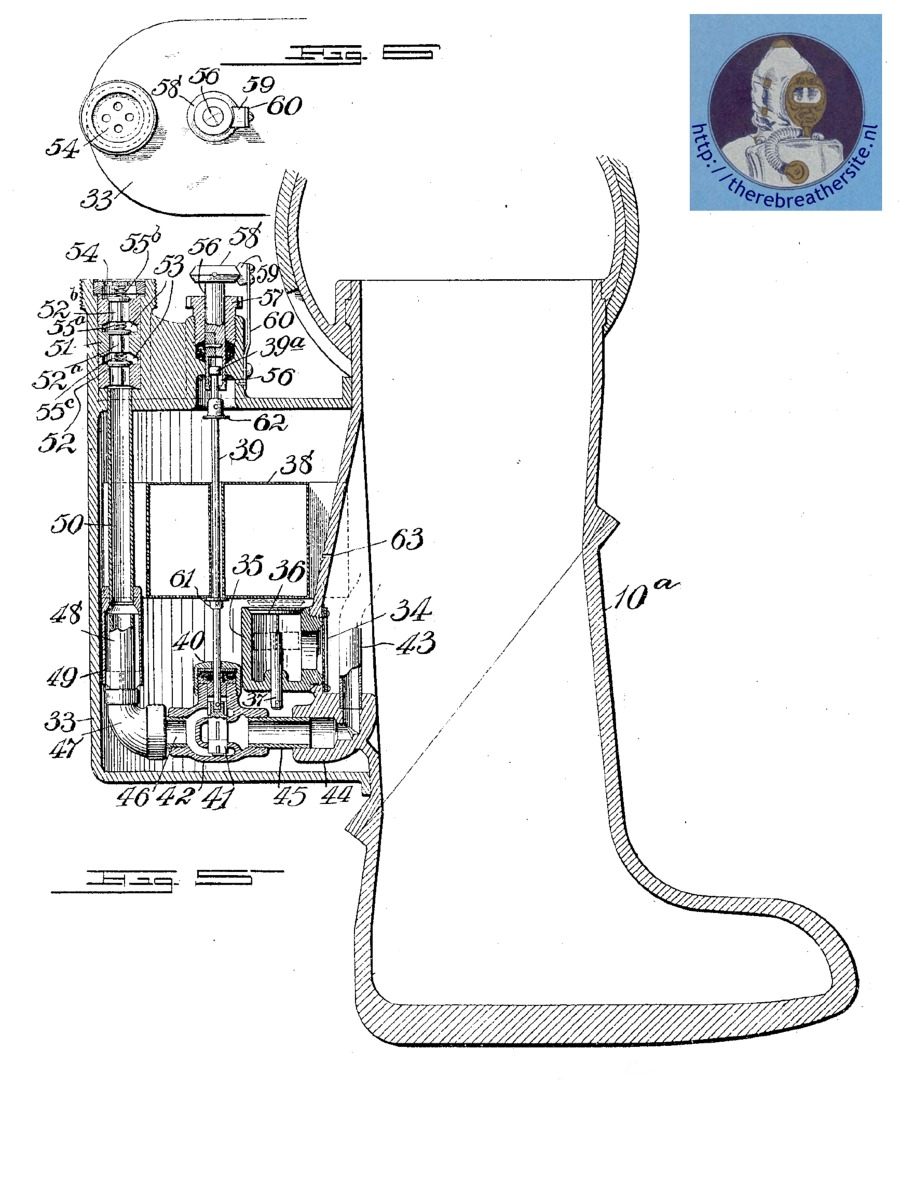
Petrie and Martin developed an air-powered water pump to pump water out of their atmospheric diving suits.
1904
Giuseppe Restucci
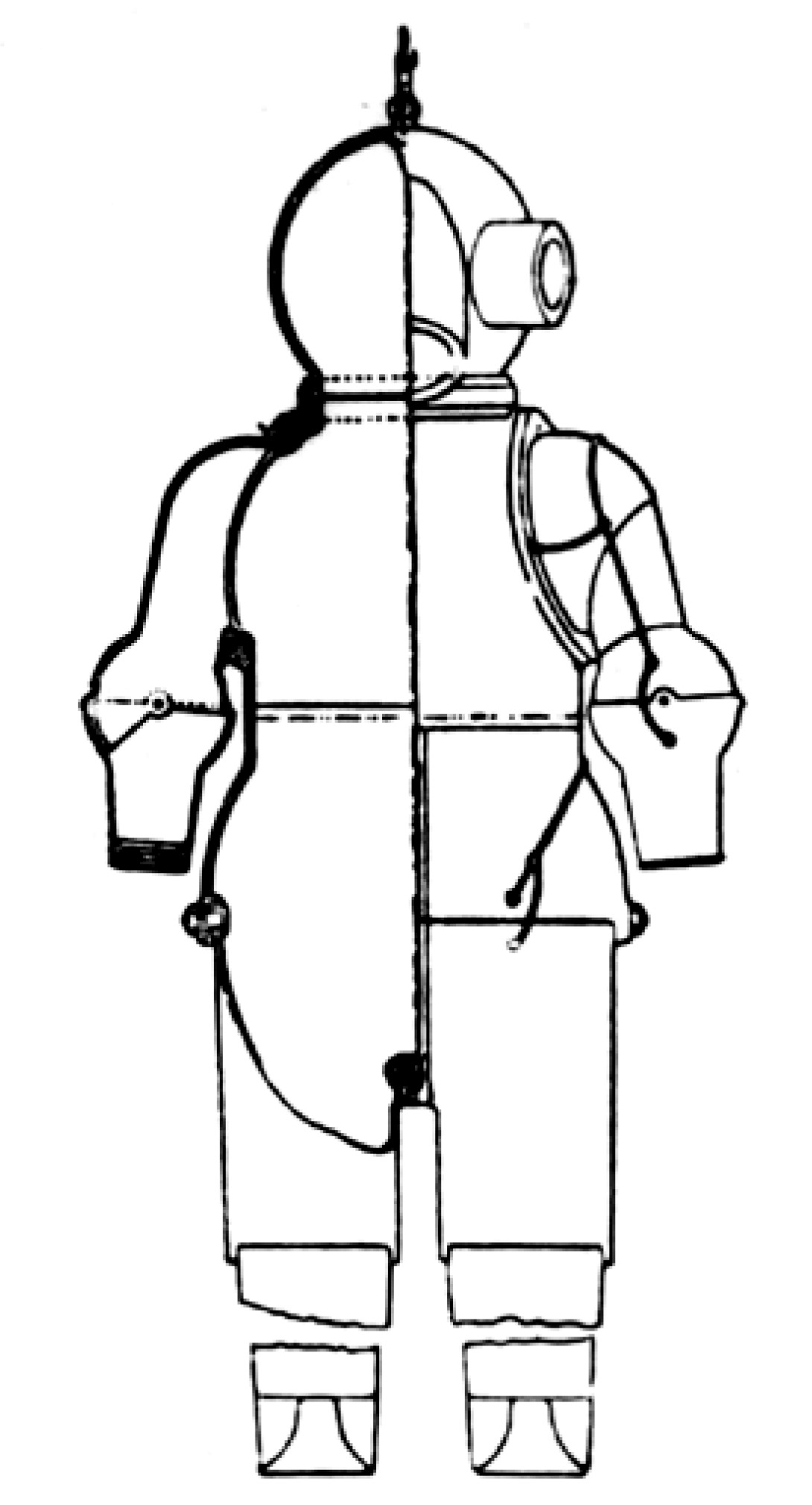
Giuseppe Restucci designed his first suit in 1904. The joints should be made watertight by means of overpressure. The patent he had in 1908 describes a more simple suit, mainly designed for salvaging small items from the seabed.
1904
Archibald McGregor
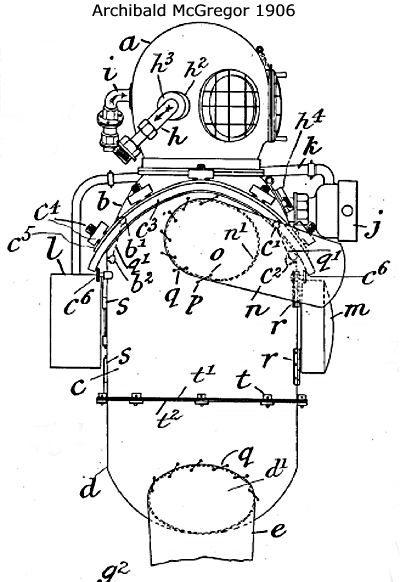
A patent taken out in 1906 by Archibald McGregor, of Queensland , recalls that of Murray and Stuart, since it provides the diver with three separate dresses.
1906
Frank Knoff
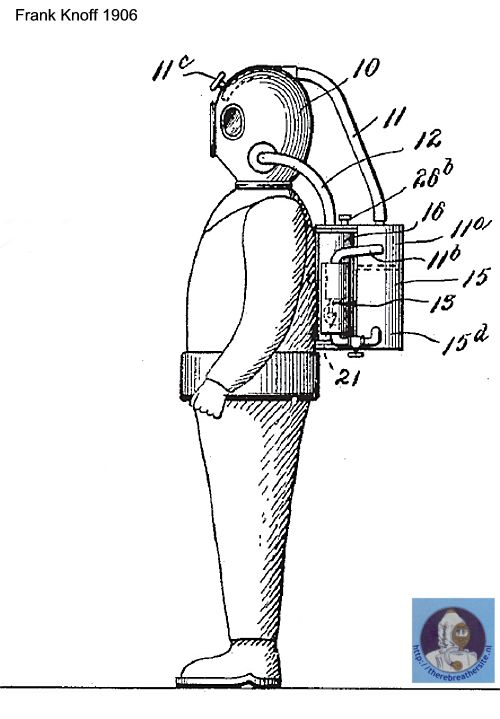
A metal casing is retained for the trunk, but both arms and legs are now covered with wire-stiffened waterproof cloth.
1906
Friedrich Gall

In 1906 Friedrich Gall patented a dress of rather peculiar shape. Apart from this, it has no features of special interest, except that the diver was provided with armoured and jointed gloves. The main joints were of the ball-and-socket pattern.
1906
M. Charles Pecourt de Pluvy
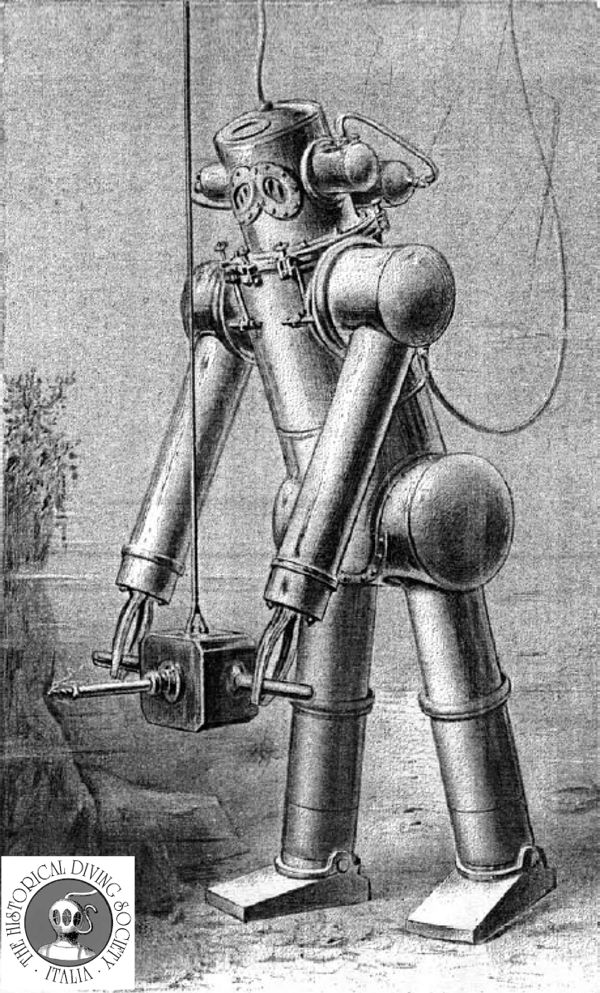
M. de Pluvy made one of the first regenerative type of atmospheric diving suits. Mr. Pluvy claimed to have made several dives to 100 meters with his suit. Although the joints were made of leather and rubber the suit seems to have worked.
1908
Hall and Rees
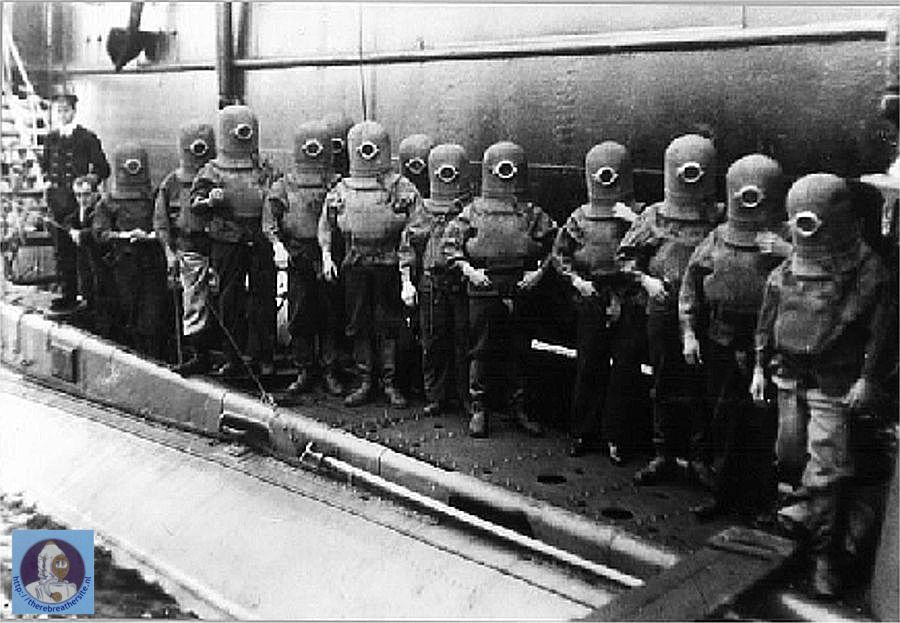
Although not directly related to atmospheric diving suits, the invention of a rebreather for escape purposes using Oxylithe is worth mentioning here.
1908
Giuseppe Restucci
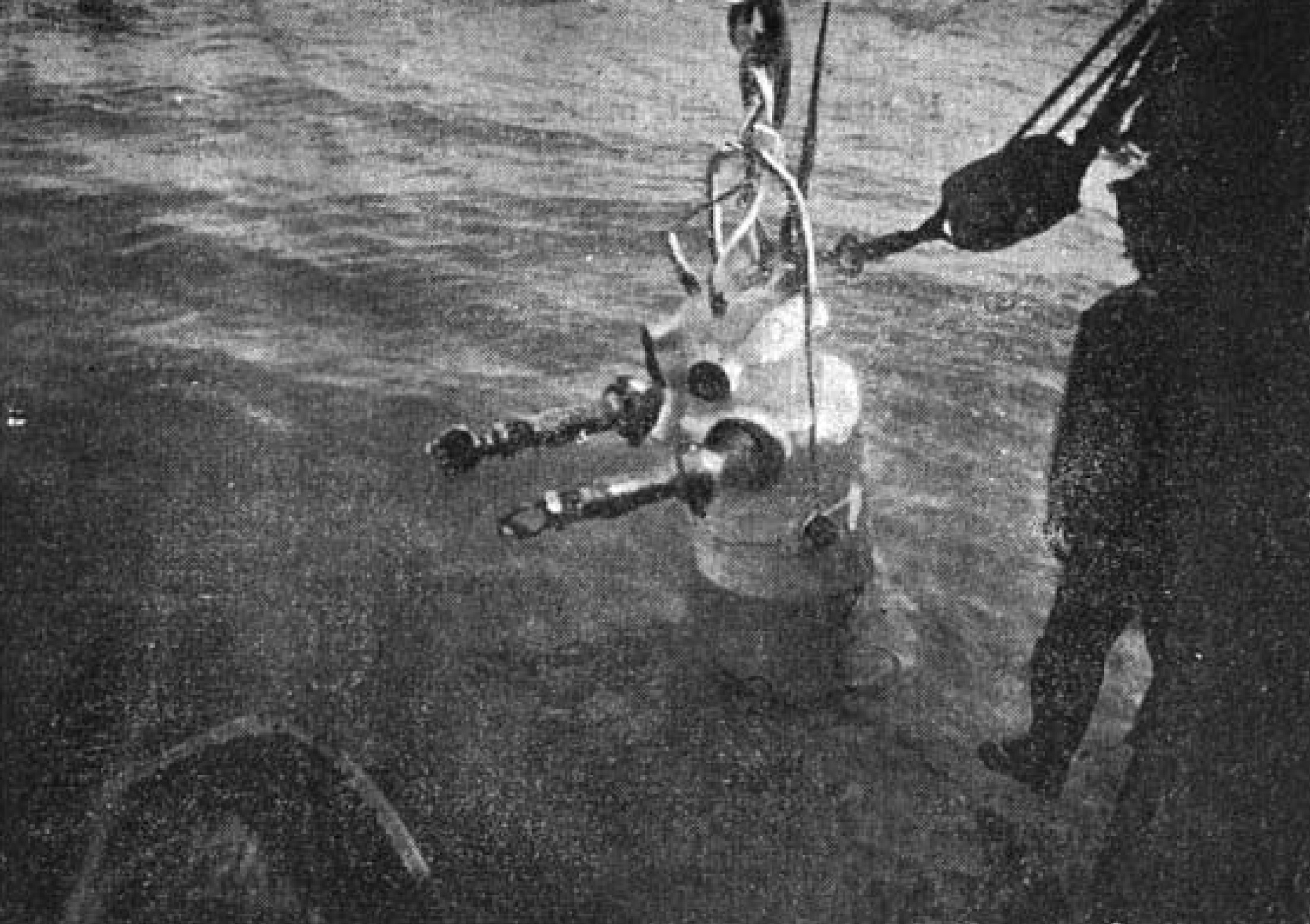
In 1904-1908, the retired technical chief of the Regia Marina, produced a very interesting drawings of three armoured diving suits. His specification showed an excellent knowledge of the problems and proposed viable, though sometimes very complicated, solutions.
1911
Enos B. Petrie

In 1911 Enos B. Petrie patented a sort of umbilical, in fact the air hose had a communication wiring integrated
1911
Anton Reznicek
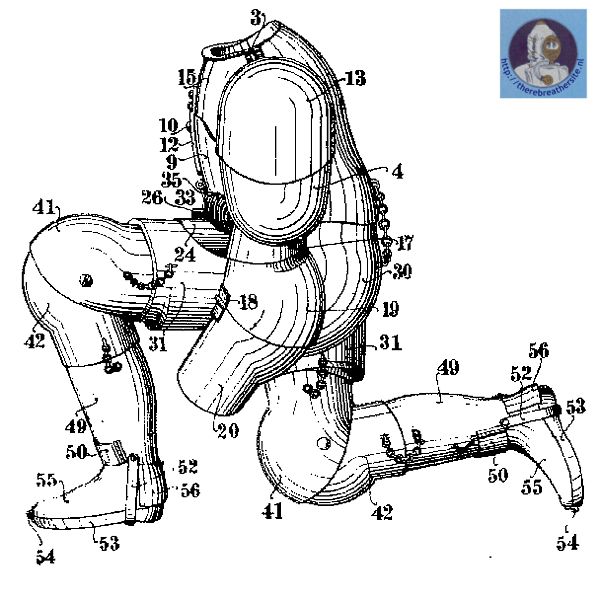
Anton Reznicek from Vienna patented his invention in 1911 as Austrian patent nr 50212. He described several ways to prevent the rubber cover of a diving armour to get entangled between the joints. By creating space in front of the joints and by using springs and cover plates covering the joints he claimed to have find a way to prevent the rubber to get between the joints.
1911
Charles Williamson
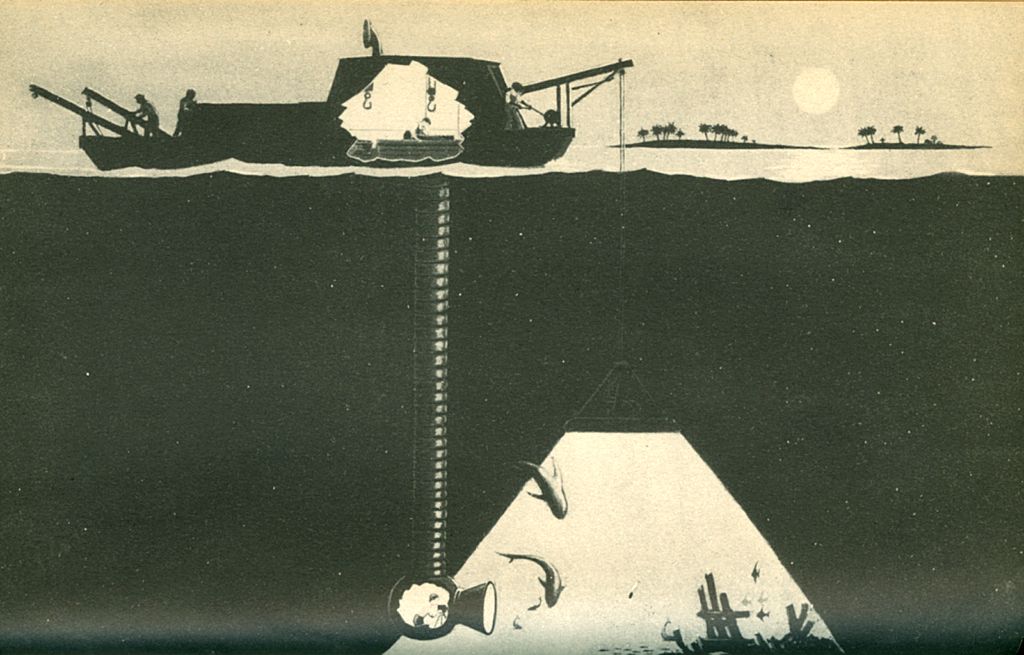
Charles Williamson was the father of John Ernest Williamson (1881-1966), an important cinematographer who made the first underwater films. Captain Charles Williamson was the inventor of a flexible arm with a coupled mitten. This flexible arm led to the development of a tube that could be lowered from a boat to the sea bottom.
1911
Chester E. MacDuffee
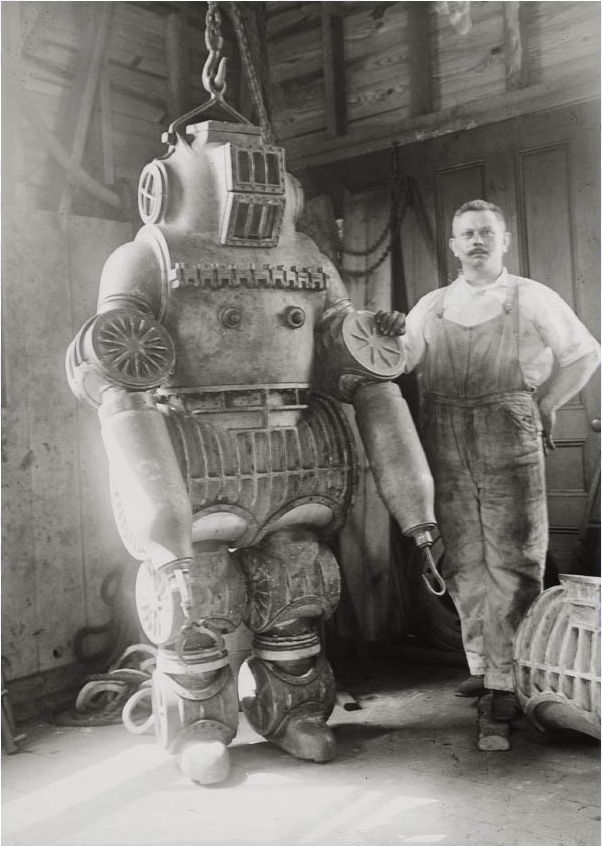
Macduffs ADS was tested in 1915 in Long Island Sound. It was made from aluminum alloy and weighted about 250 kilo. The cylindrical joints mounted on ball bearings allowed movement in one direction only. They do not appear to be watertight due to the fact Macduffee implemented a waterpump in the suit.
1912
Anderson and Silver
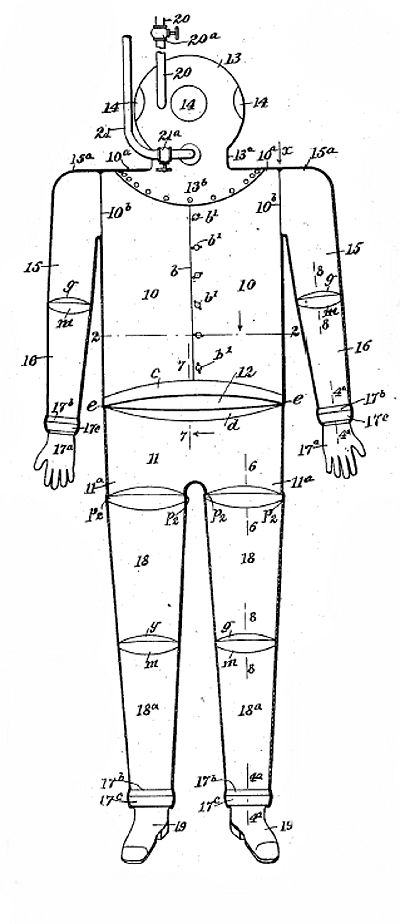
Anderson and Silver patented their suit in 1912. The suit was Attached to an air supply and was made of metal covered with an airtight and waterproof material.
1912
Durand and Bembina
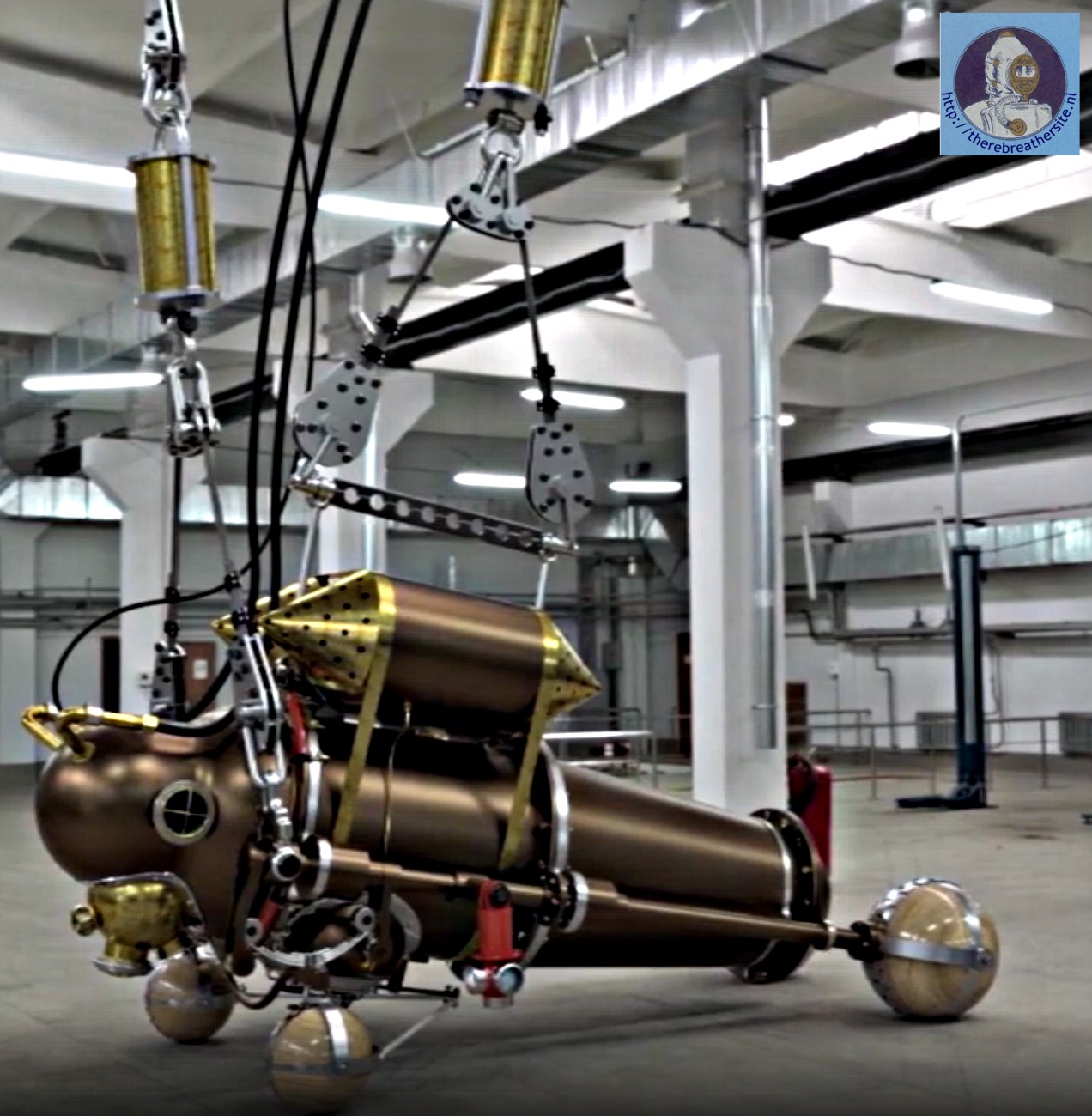
The dress proposed in 1912 by Leone Durand and Melchiorre Bembina is of a curious type, designed to be towed along the bottom, and to this end is fitted with four spherical oaken wheels. It can either be towed on two wheels, with the diver almost upright, or on all four, in which case he lies prone, or nearly so.
1913-1940
Neufeldt und Kuhnke
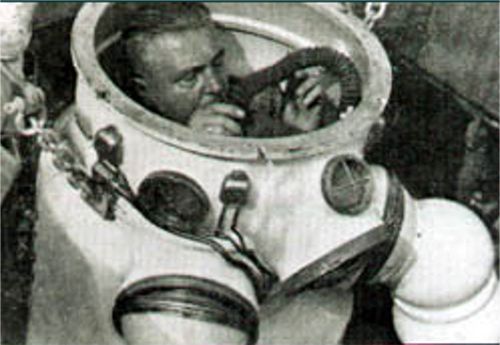
Neufeldt und Kuhnke, a German company from Kiel was the first large scale producer of atmospheric diving suits. The company obtained a number of patents and sold their suits during 27 years!
1914
Ernest Niehoff
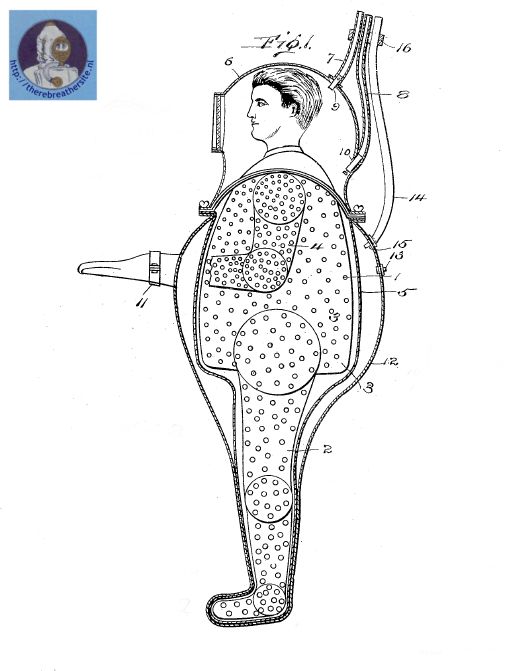
Ernest Niehoff living in Roanoke Virginia patented his suit in 1914. He called it a diving apparatus that consists of a inner flexible not waterproof metal shell.
1914
Jean F. Deray
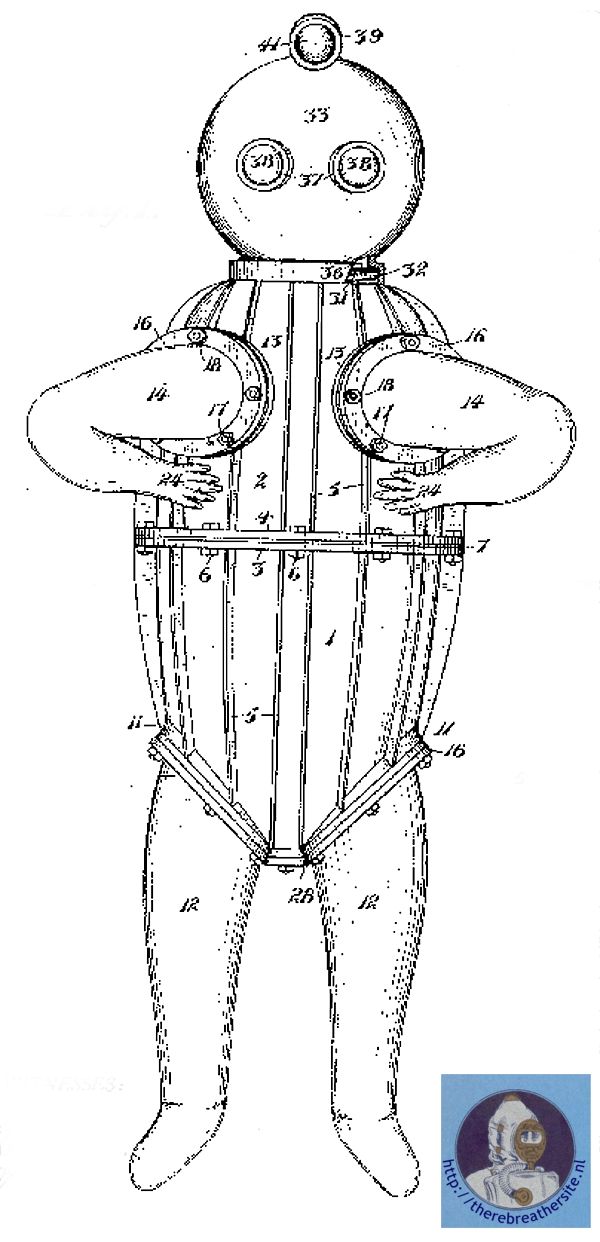
Mr. Deray lived in Sunnyvale Santa Clara USA.
He designed a suit he claimed able to dive to 45 meter.
1915
Benjamin F. Leavitt
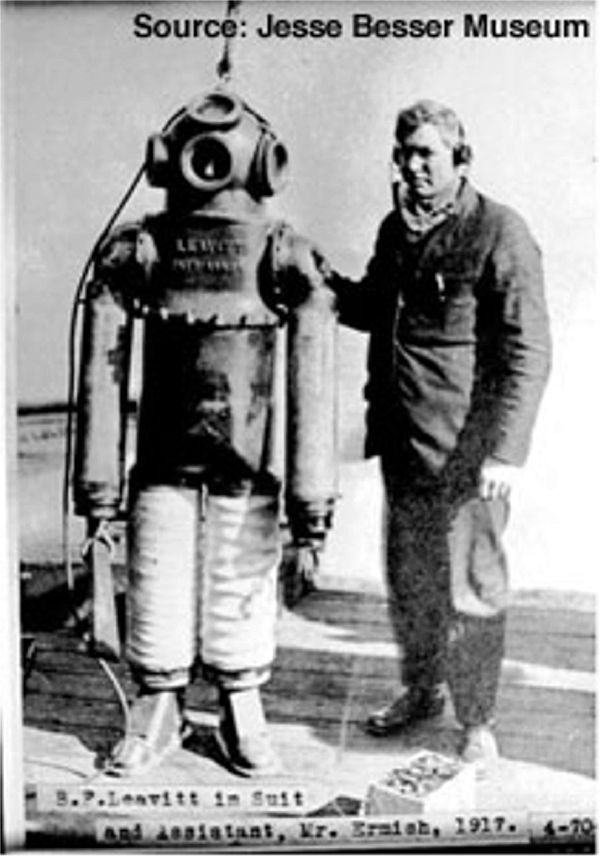
Benjamin Franklin Leavitt build another revival of spiral armouring like Buchanan and Gordon. The radius pieces of the flexible arms and legs add to the resemblance.
1915
Harry L. Bowdoin
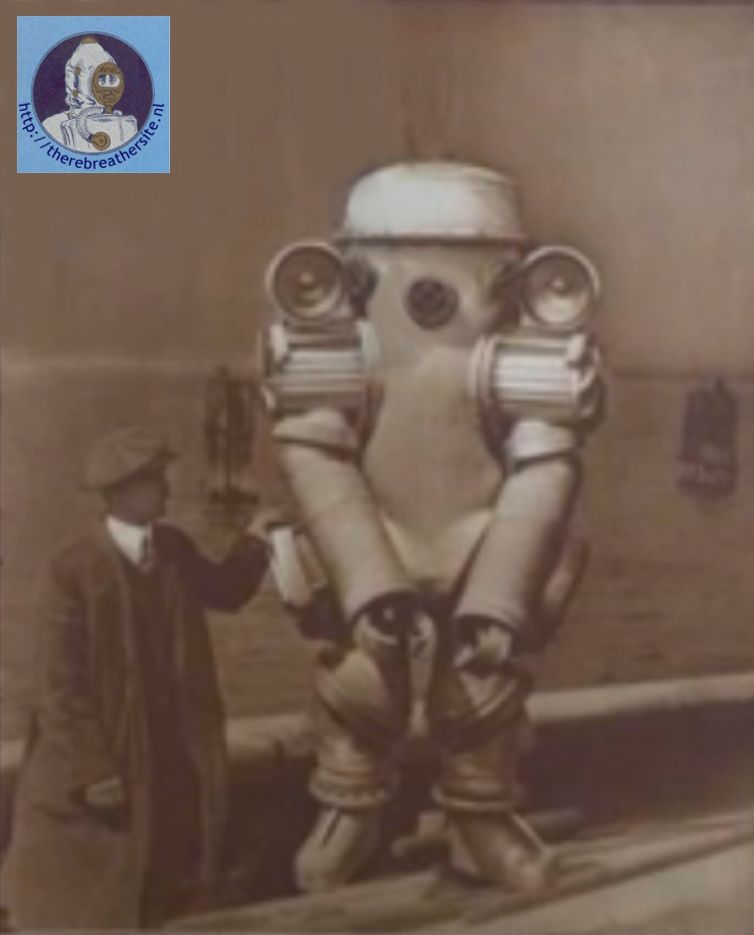
Bowdoin, 1915 (U.S.) – Harry L. Bowdoin of Bayonne, N.J., received a patent in 1915 for a new type of oil-filled rotary jointed armored diving suit. The joints had a small duct leading to the interior of the joint to allow the external and internal pressure to equalize.
1915
William Phillips Thompson

Thompson’s patent shows a protective shell over the ball joints of a diving suit. The reason may be that the joints have a high precision and once damaged the surface can no longer seal on the seals.
1916
William S. Boyd
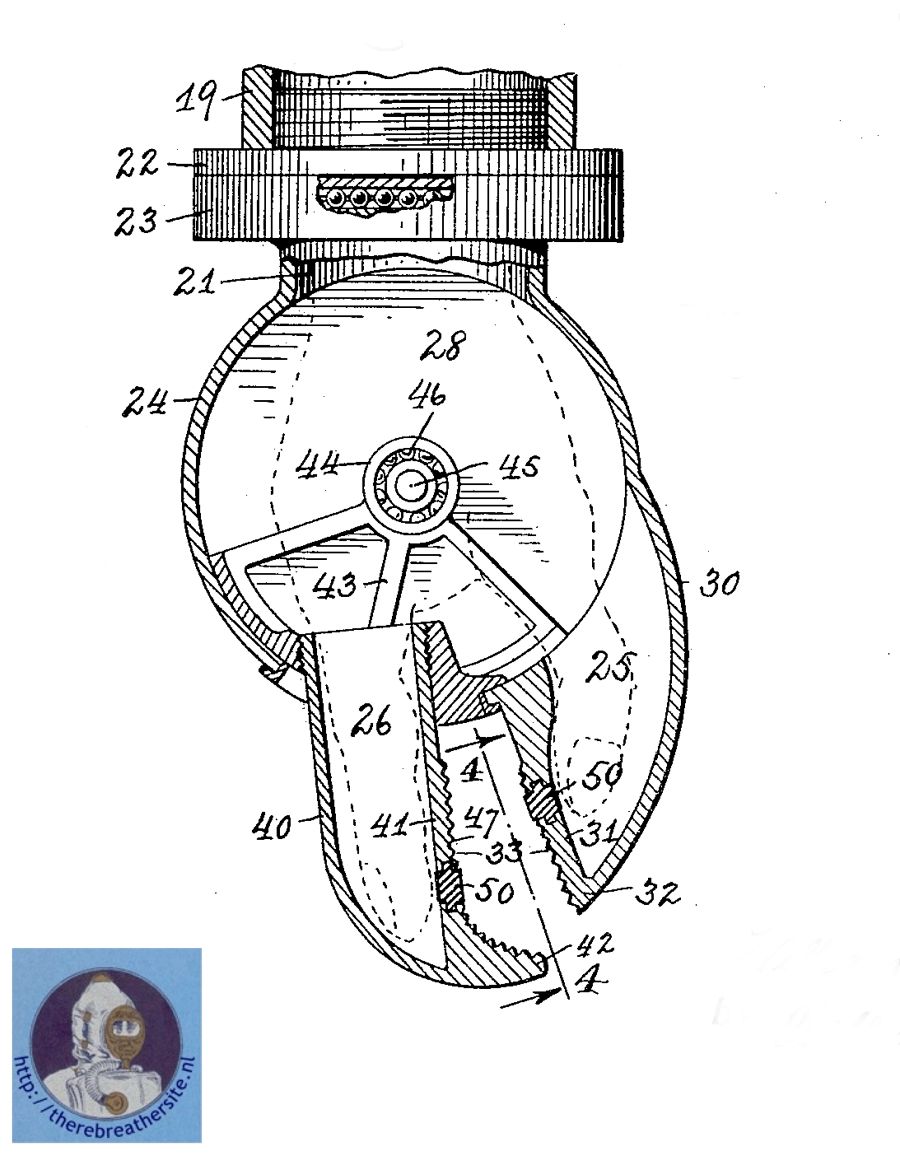
William S Boyd lived in Greatkills Richmond New York in 1916. He patented a new type watertight joint and tool.
1916
Miller and Dunn
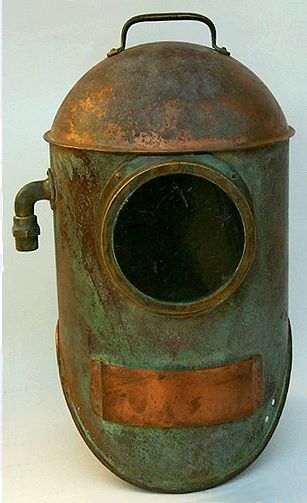
The Miller and Dunn helmets were produced by the Miller Dunn Company from Miami Florida. The helmets were used by the Navy and by civilians for many years.
1917
Georg Stolle
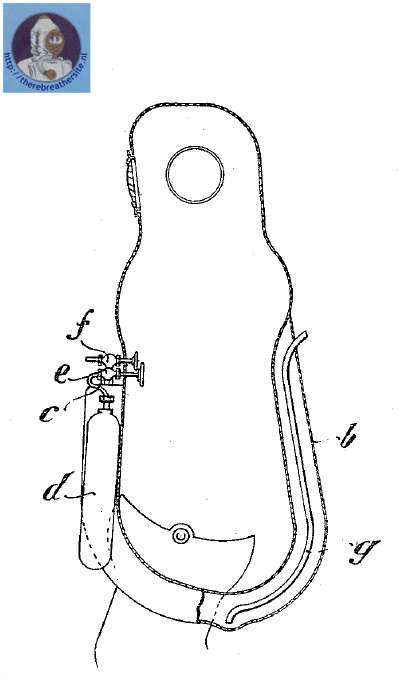
There is not much known about George Stolle. His patent was registered in 1917. He put the design in in 1914. Stolle was a citizen of Kiel Germany.In 1920 he patented another suit with F. Gall. Gall later worked for Neufeldt und Kuhnke.
1917
Frank William Walters

F.W. Walter from New Zealand patented an improved diving suit with increased resistance to water pressure. He used metal bands and fabric for this.
1917
Rudi de Graff

Little information can be found about Rudi de Graff. The American Russian filed a patent in 1917 which was granted in 1921. Below is written down what he claims in his patent.
1918
William John Mellersh-Jackson for Leavitt Co.
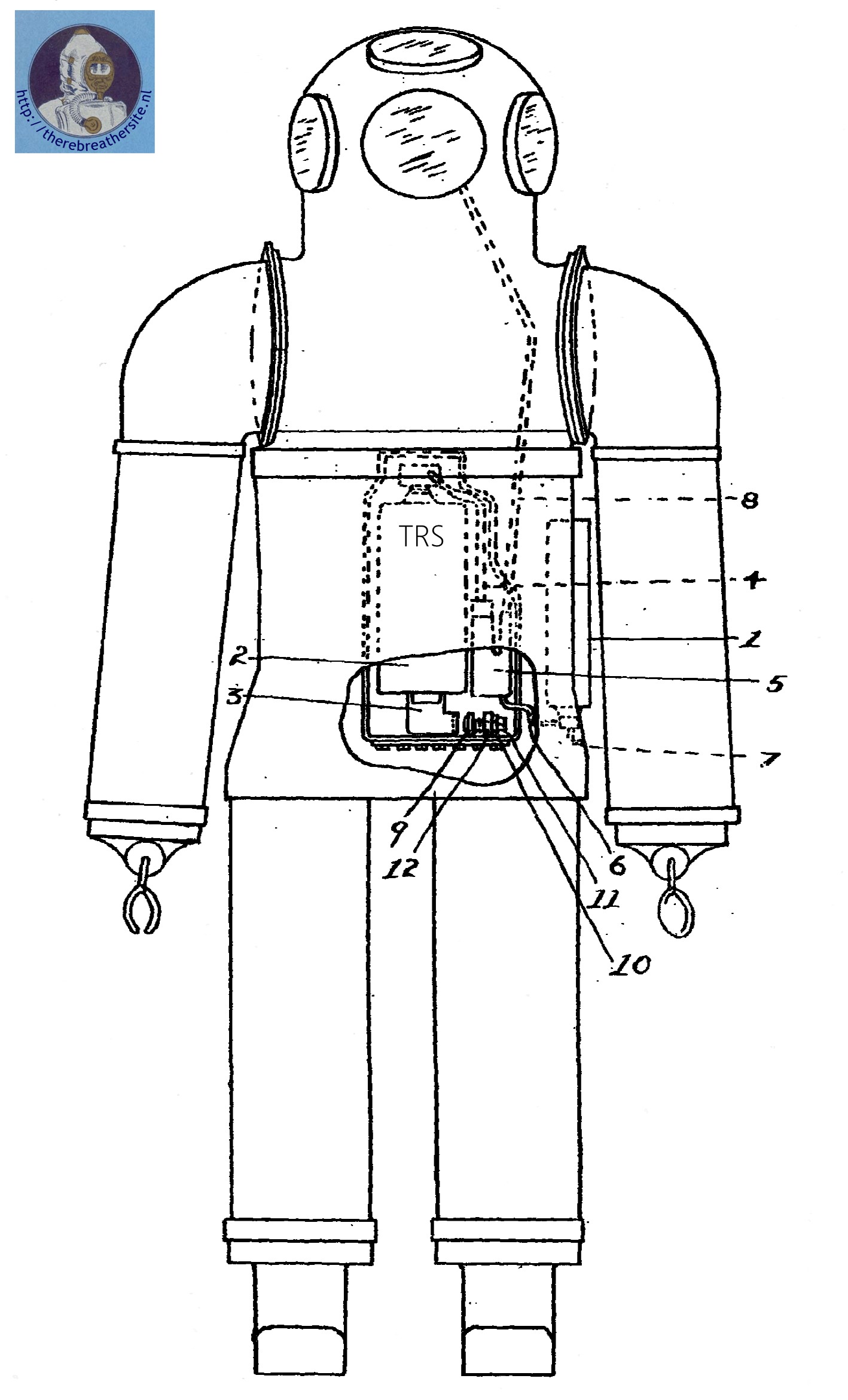
In 1918 William John Mellersh-Jackson filed a patent application working at Haseltine Lake & Co in London for the Leavitt Company USA for a breathing system to be used in atmospheric diving suits.The oxygen rebreather in question was novel in that the invention provided a solution to the risk of gas release that occurs when water comes into contact with caustic soda.
1919
James F. Long Texas USA
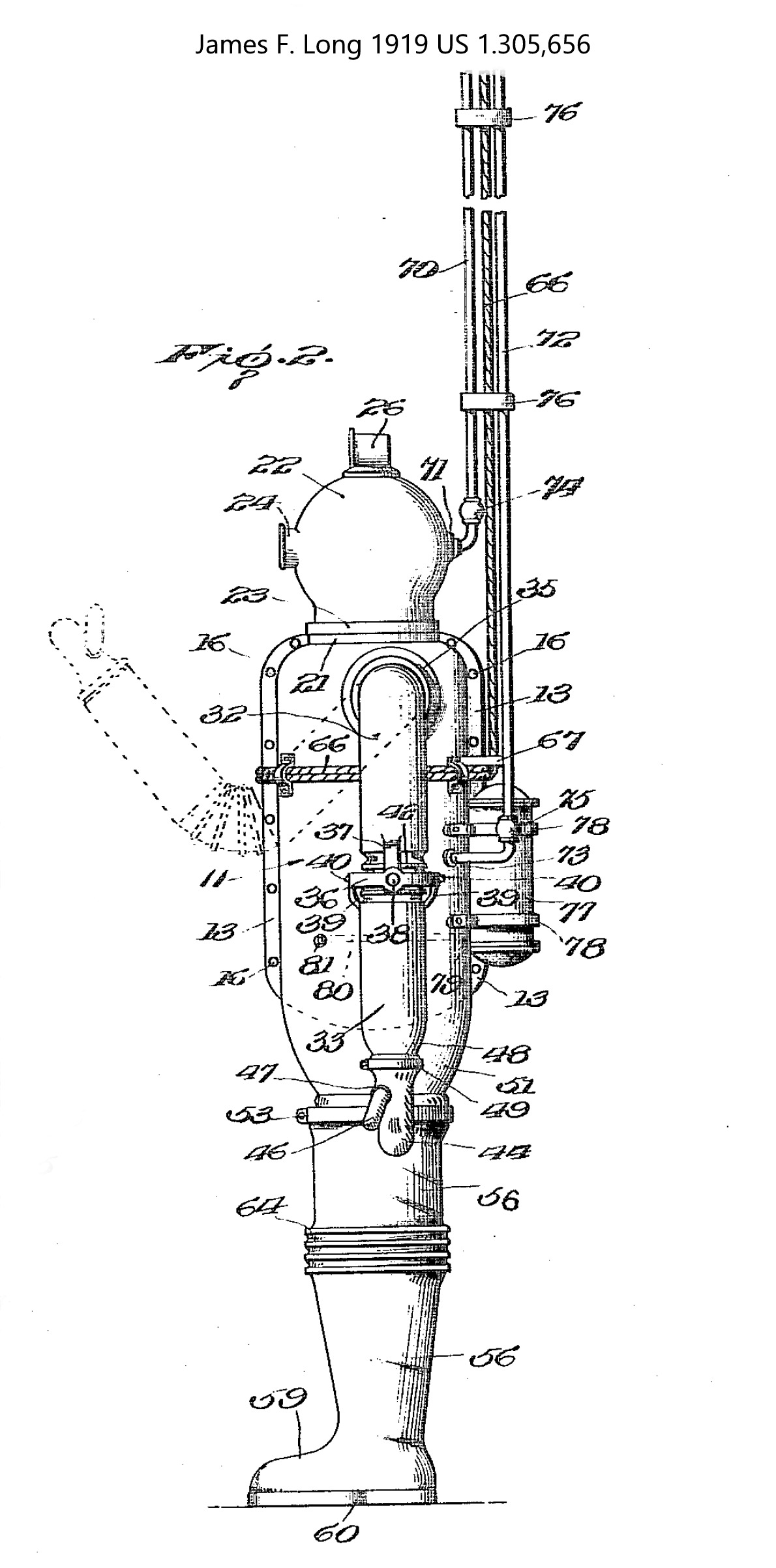
The patent of James F. Long from Texas USA shows an ADS where the waterproofing is obtained by covering the metal suit with waterproof fabric. No other innovations can be found in the patent claim. Supply and return of breathing air via hoses from the surface.
1920
L. Vain Talling Estonia
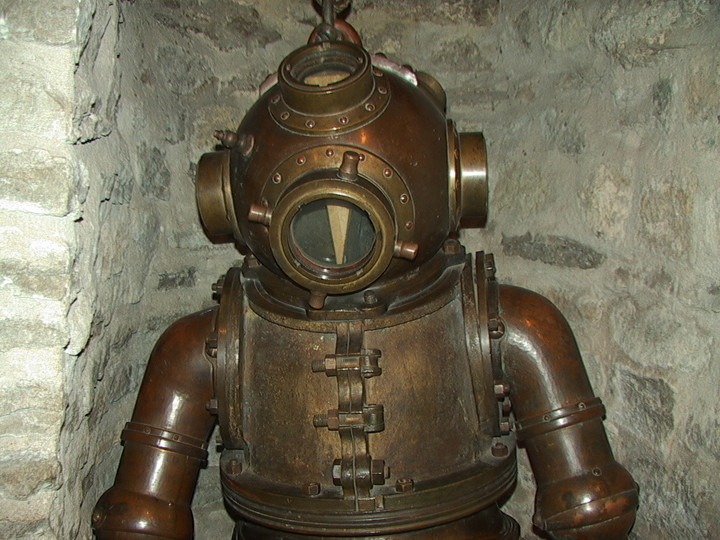
I have not been able to find much information about this copper diving suit. It is on display in the Estonian Maritime Museum with the text that the suit was made by L. Vain in 1920 and has never been used.
1920
Frank W. Walters
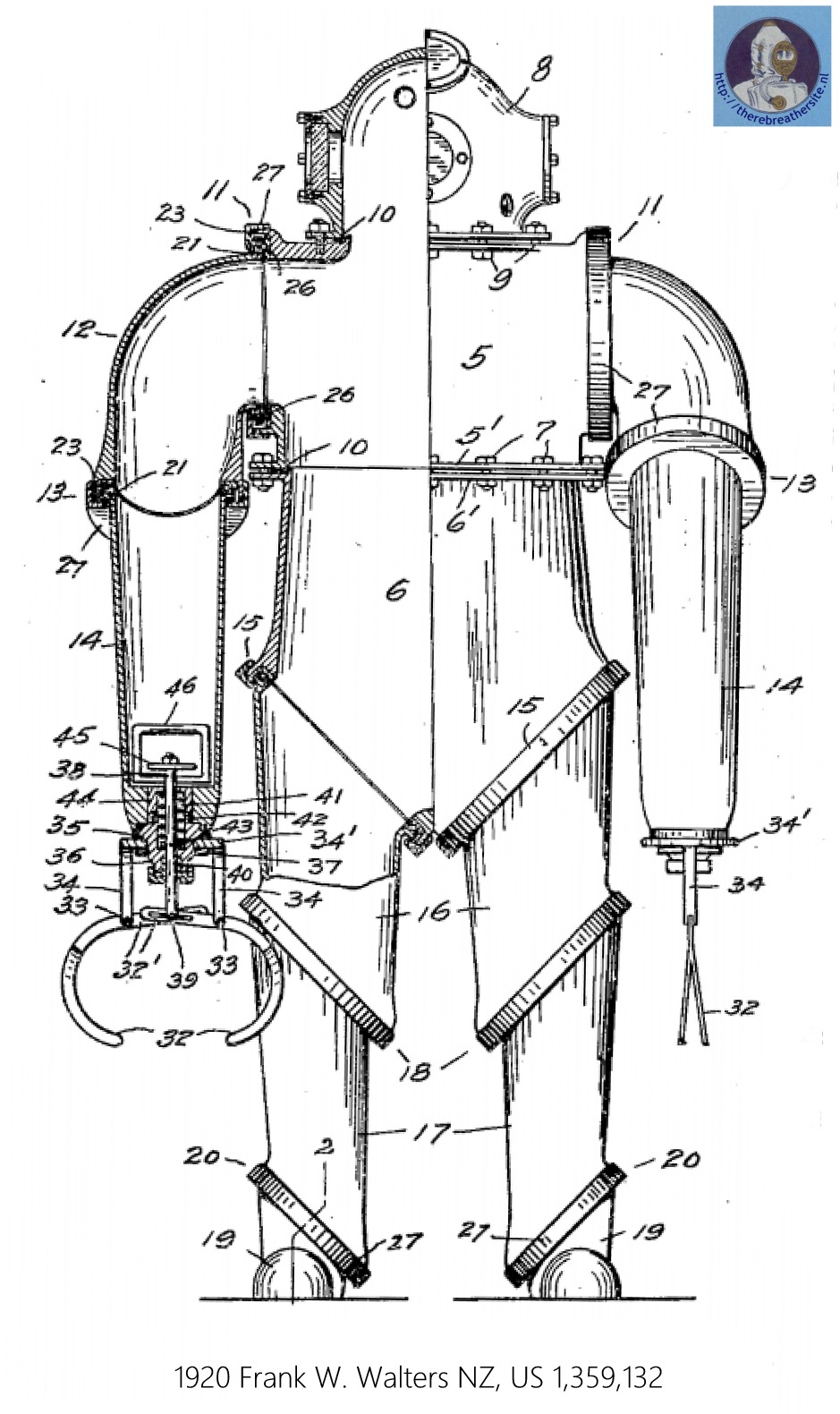
Frank W. Walters, who first lived in New Zealand and patented another invention in 1917 now patented a Submarine Armor in Canada.
1921-1978
Joseph Salim Peress
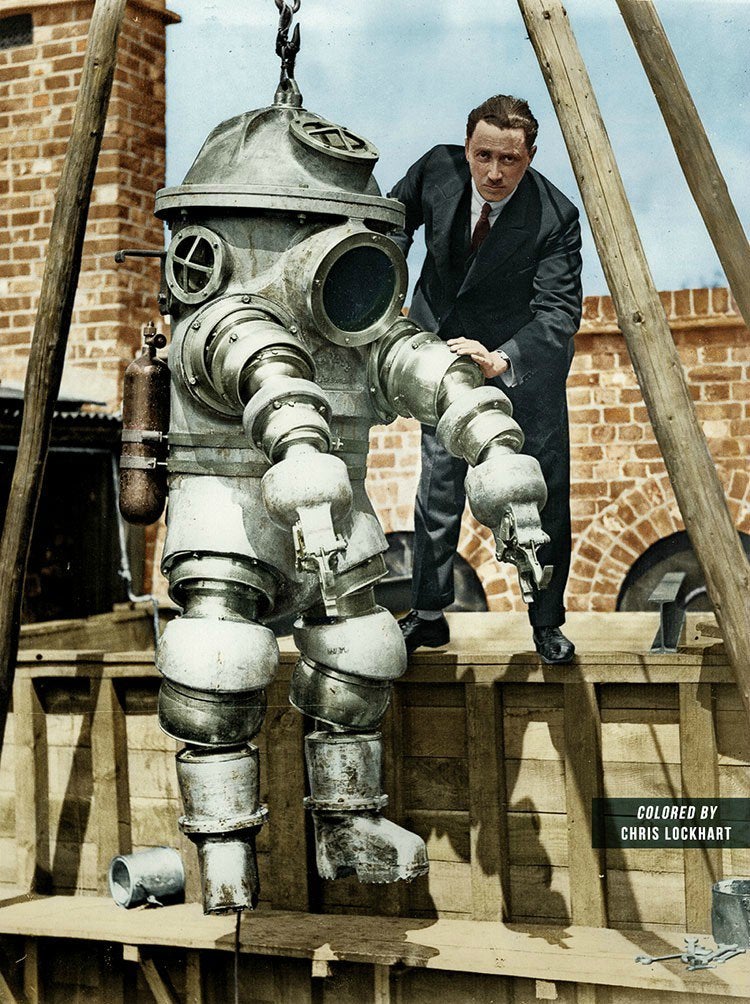
Not many inventors have had as much influence on the development of the atmospheric diving suit as Joseph Salim Peress. As early as 1918, after having spent his youth in the Middle East, he began to dream about an atmospheric diving suit. In 1921 he realised his dream. This dream continued until the 1970s when, as a senior citizen in retirement, he contributed to the development of diving suits such as JIM. Here is the story of Peress!
1921
Arthur Phelps Marr flexible arm
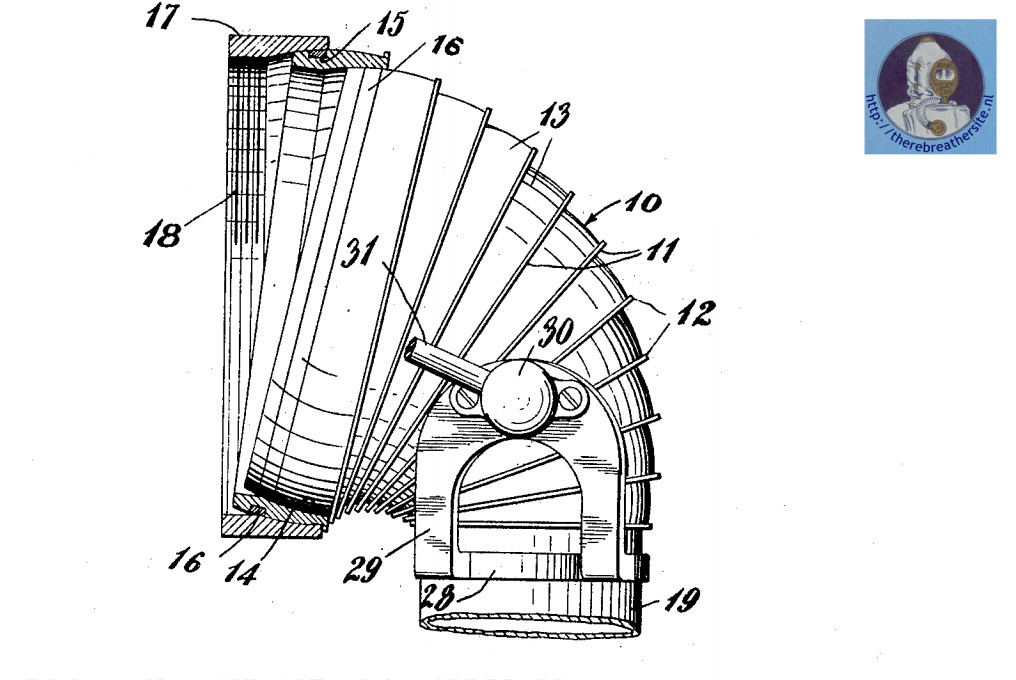
This invention relates to an improved non-collapsible flexible joint for diving armor and has for its principal object to provide a joint which is so designed as to permit the bending of a limb and yet protect the same from external pressure.
1921
Manfred Carlon Stockholm Sweden
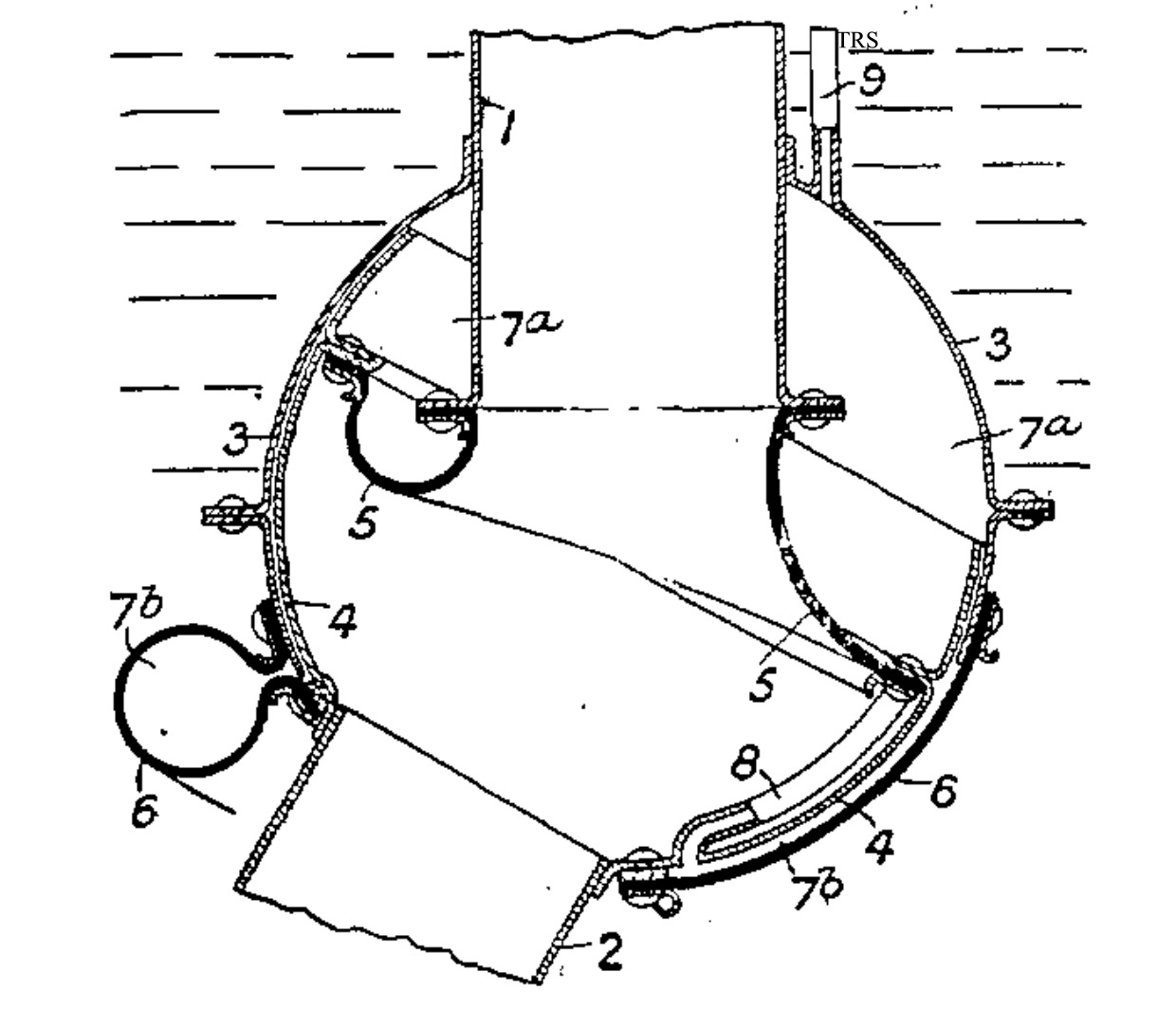
Another patent for a movable coupling that could be used for various purposes including diving suits. Like Drager’s patent, the search for the ideal coupling continued and was finally solved by Peress in 1929.
1921
Henry D. Deam
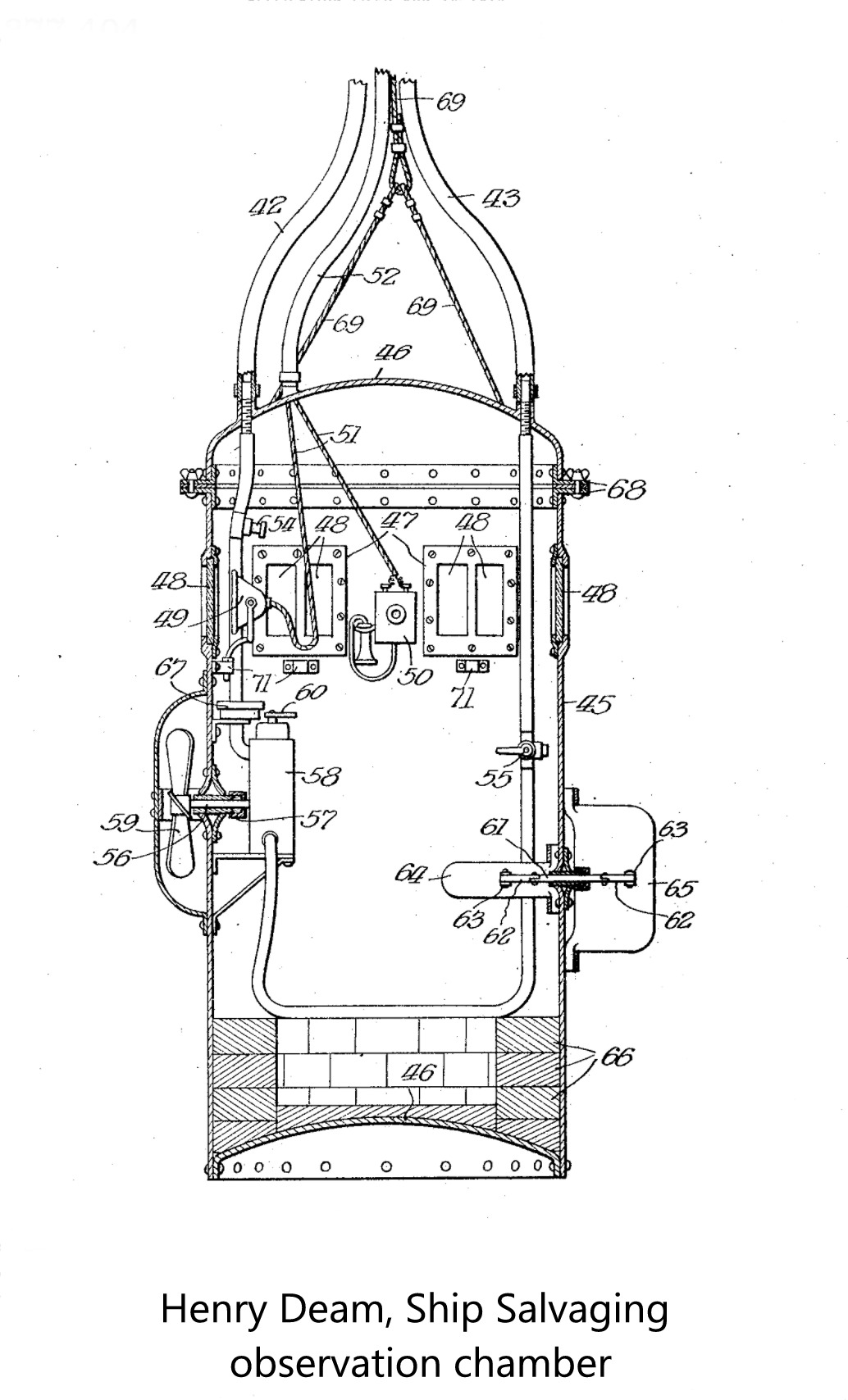
Henry D. Deam designed both a diving bell and a diving suit for recovering ships at great depths.
1921
Josef Kamieniecki
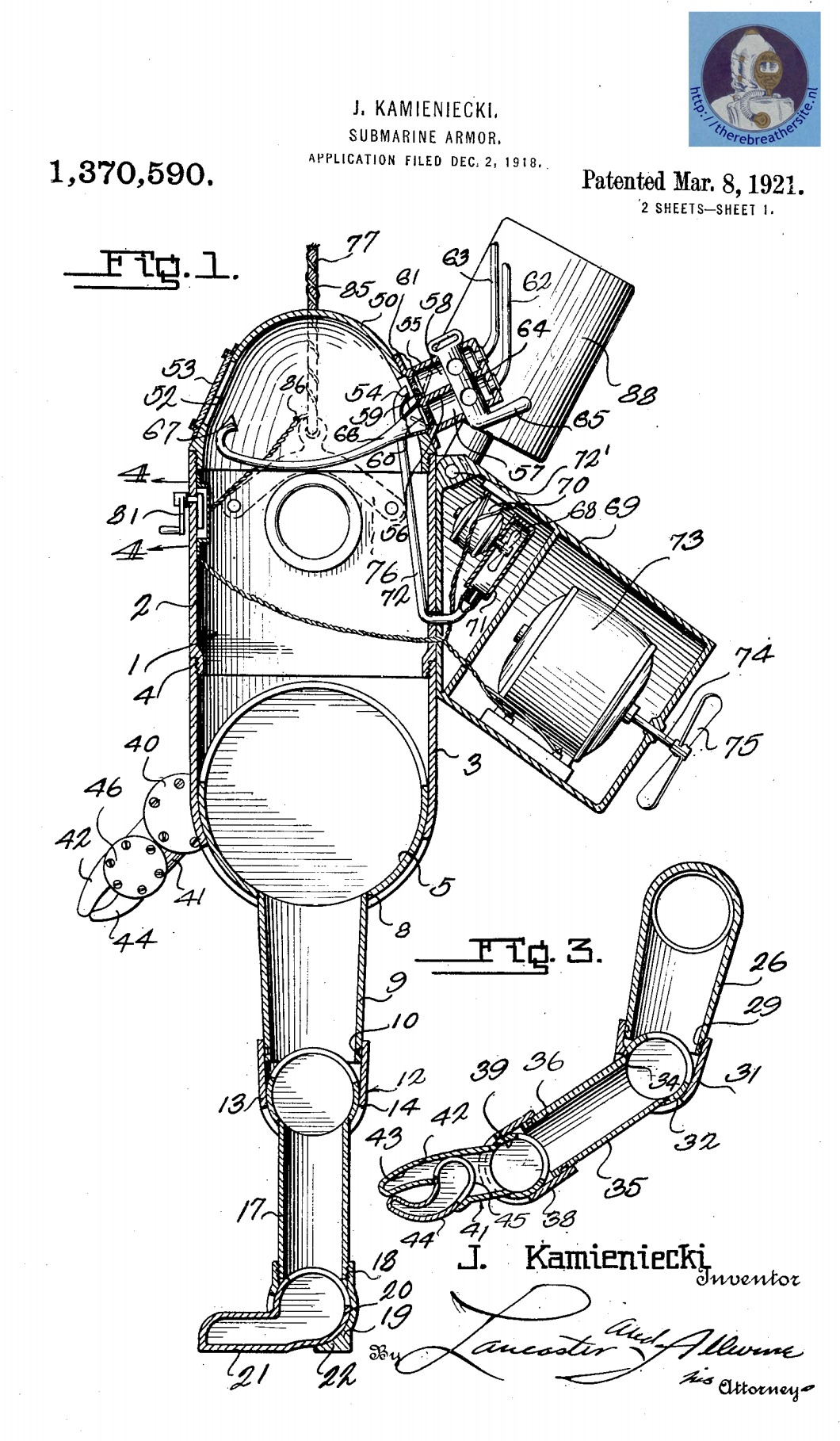
The Russian immigrant who invented in Chicago and also patented in the USA describes a suit using a lot of fantasy. It is therefore doubtful whether he ever realised his suit.
1922
A. Schrader’s Son Inc. USA
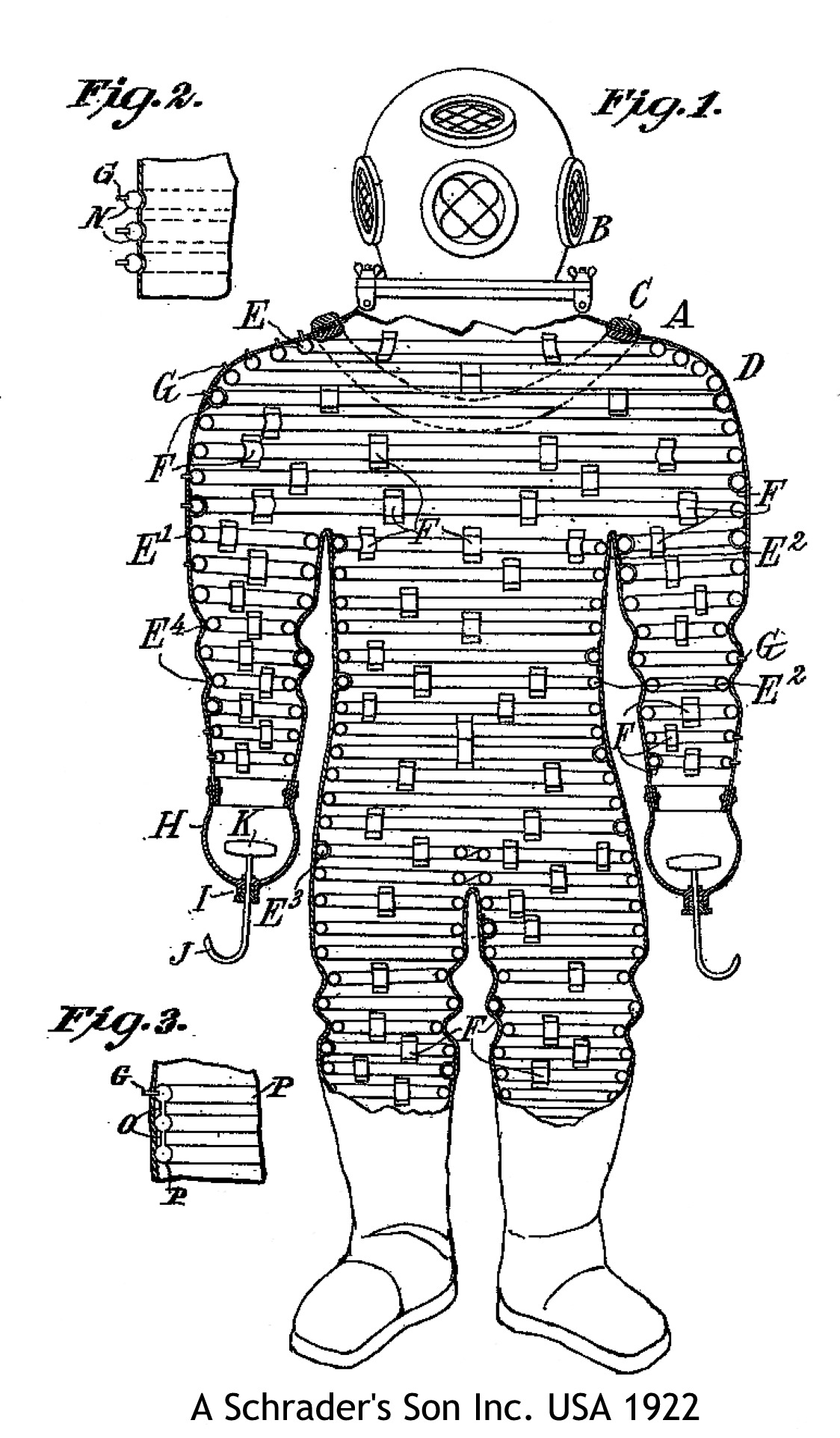
Schrader’s suit was envisioned as inflatable rings that were supposed to offer resistance to the occurring water pressure. This would allow the supplied breathing air to be reduced in pressure.
1922
Joseph de Saint Martin from France
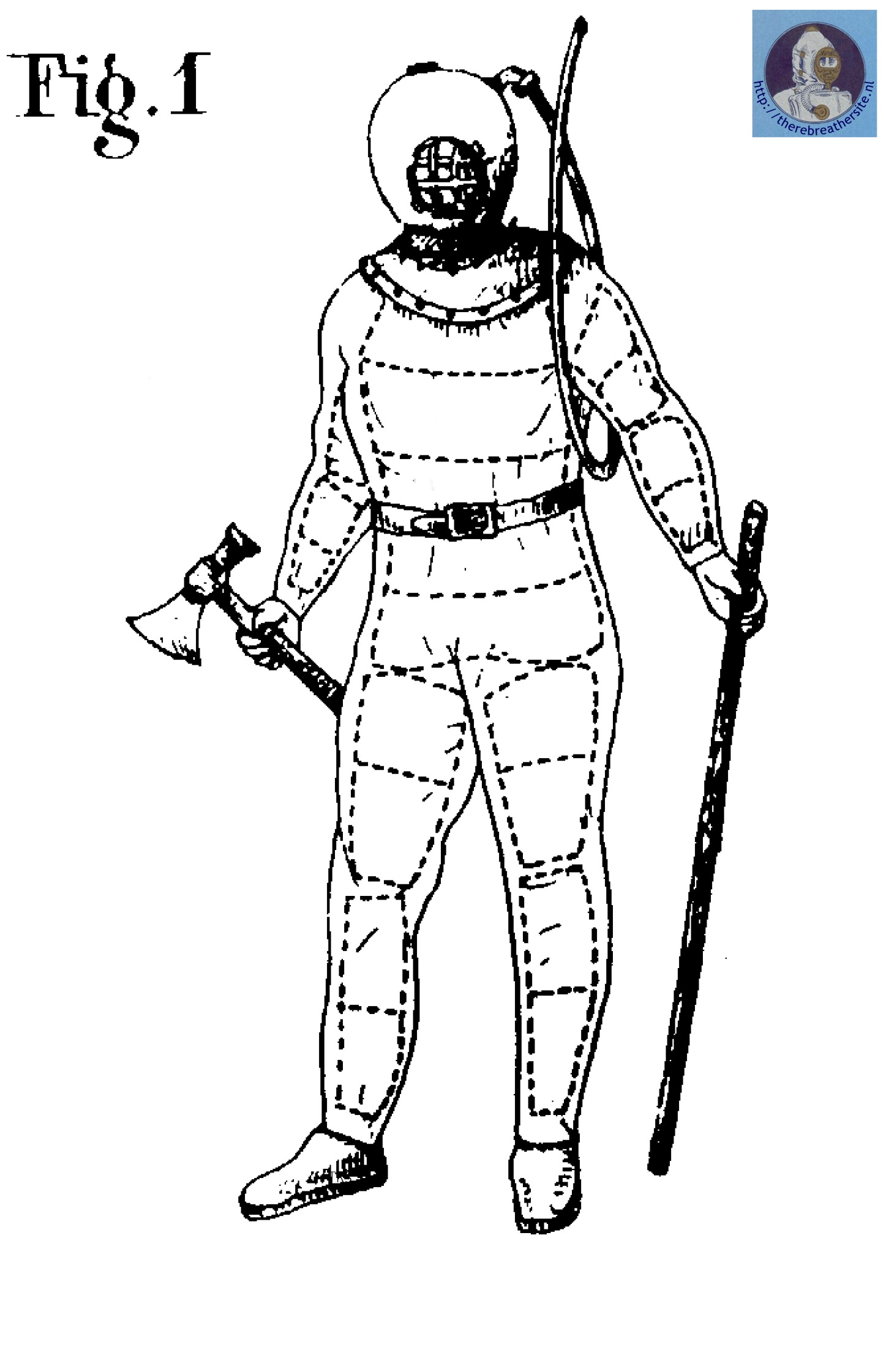
An extremely imaginative approach by Joseph de Saint Martin. His idea of cushioning the water pressure by putting a skeleton-like construction around the diver shows a lot of imagination. The suit will certainly be able to protect against the pressure up to a certain depth.
1922
Walter Carlitscheck and Otto Zander Germany
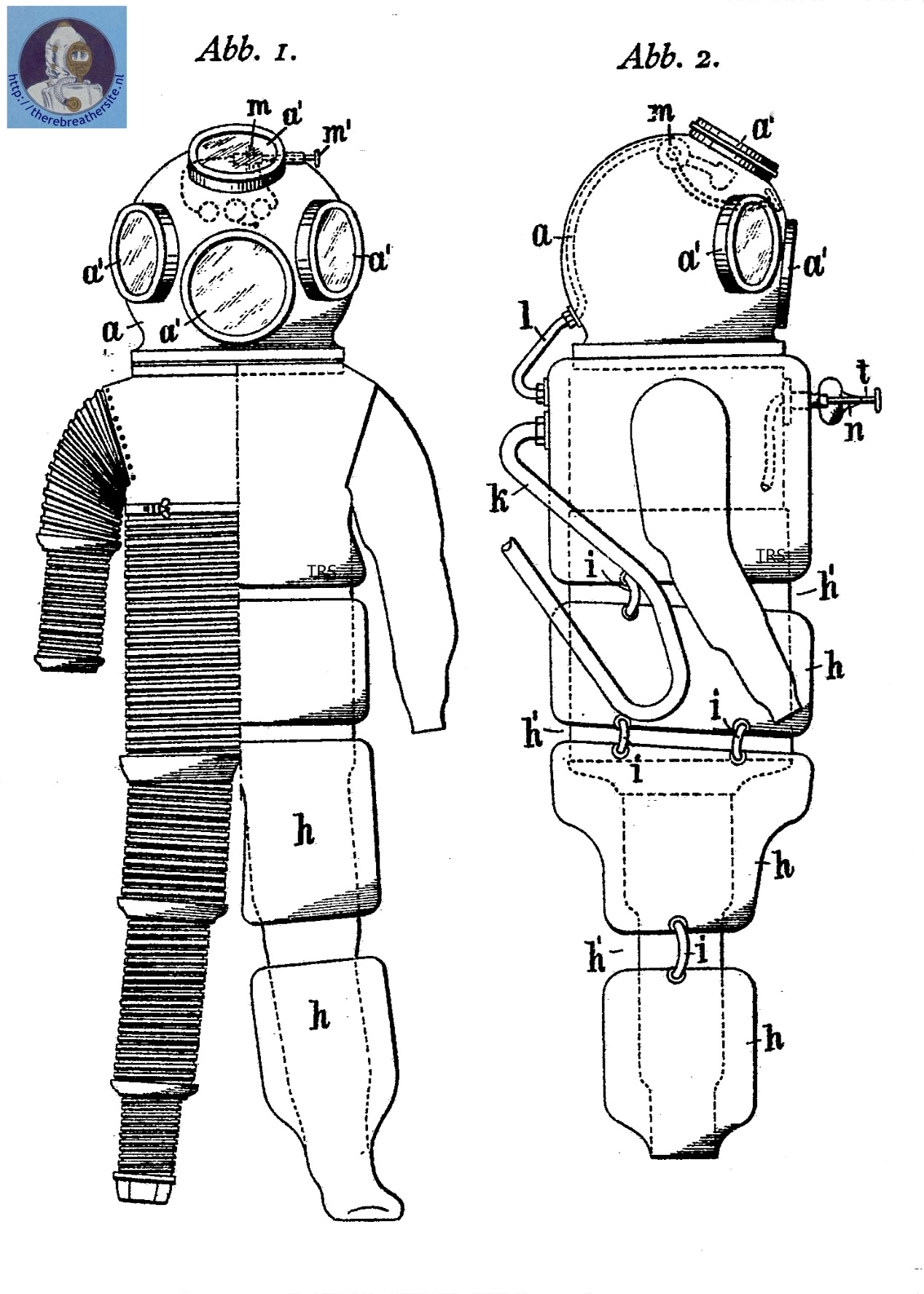
Carlitscheck and Zander designed a system whereby the exhaled air of the diver could be brought outside the suit through an ejector system. This eliminated the return hose that had to be run from the suit to the surface to remove the exhaled atmospheric air.
1922
Victor Armijo Campos
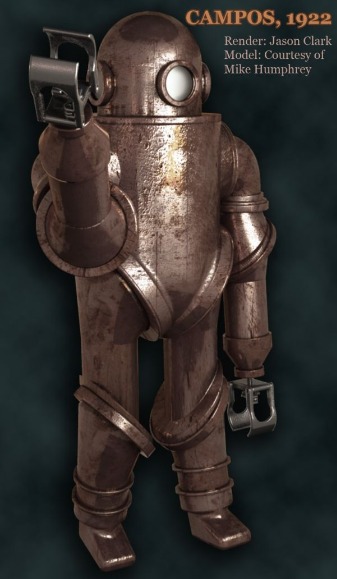
Victor Armijo Campos of New York, a Mexican living in the USA patented an atmospheric diving suit with oil-filled rotary joints which were not pressure-compensated. The suit was reportedly taken to a depth of 600f/184m.
1922
Giuseppe Gabanna
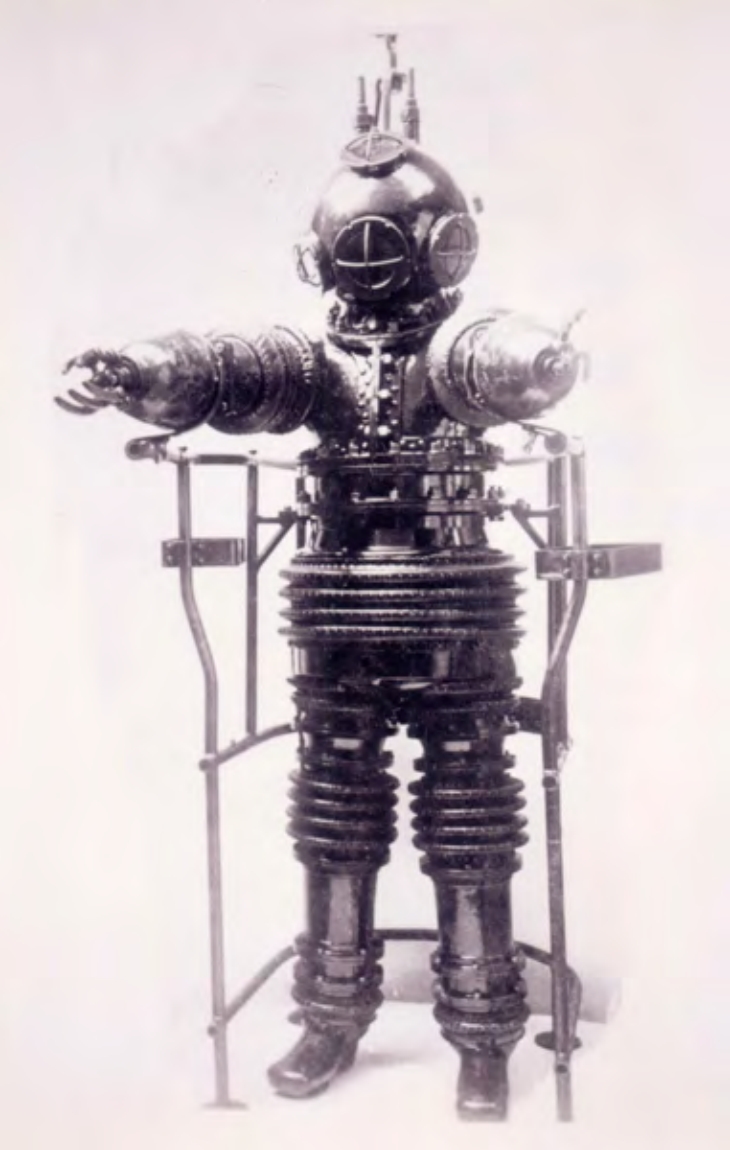
PER EMULARE I PESCI – A new type of diving suit with armour, which allows sea recoveries up to 150 meters deep. It was built by the Turin worker Giovanni Gabanna
1923
Octave Quenault and Gabriel Roux
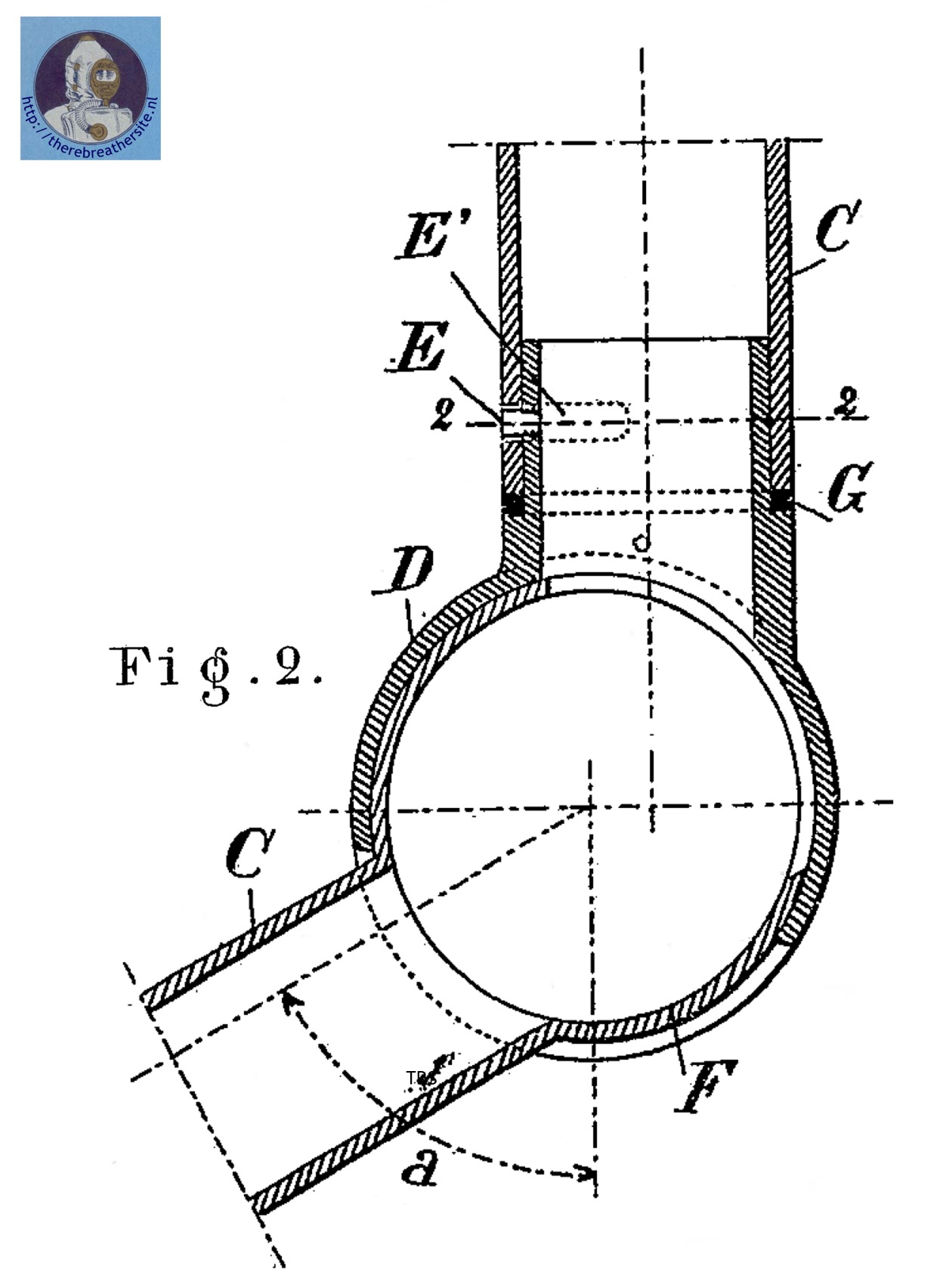
Strangely enough, the Frenchmen Octave Quenault and Gabriel Rouxin 1923 fell back on an old concept. They designed a metal diving suit over which a rubber suit had to be put on. The idea of preventing leakage in this way and providing the diver with atmospheric air was a principle that had been lying dormant for decades.
1924
Maxwell McGuinness and Herbert Tasman Davies

Pneumatically operated atmospheric diving suit
Whether the fantasies of Davies and Mc Guinness ever came to reality is doubtful. Their design of a pneumatically operated atmospheric diving suit does not seem very realistic.
1925
Verena Winifred Holmes
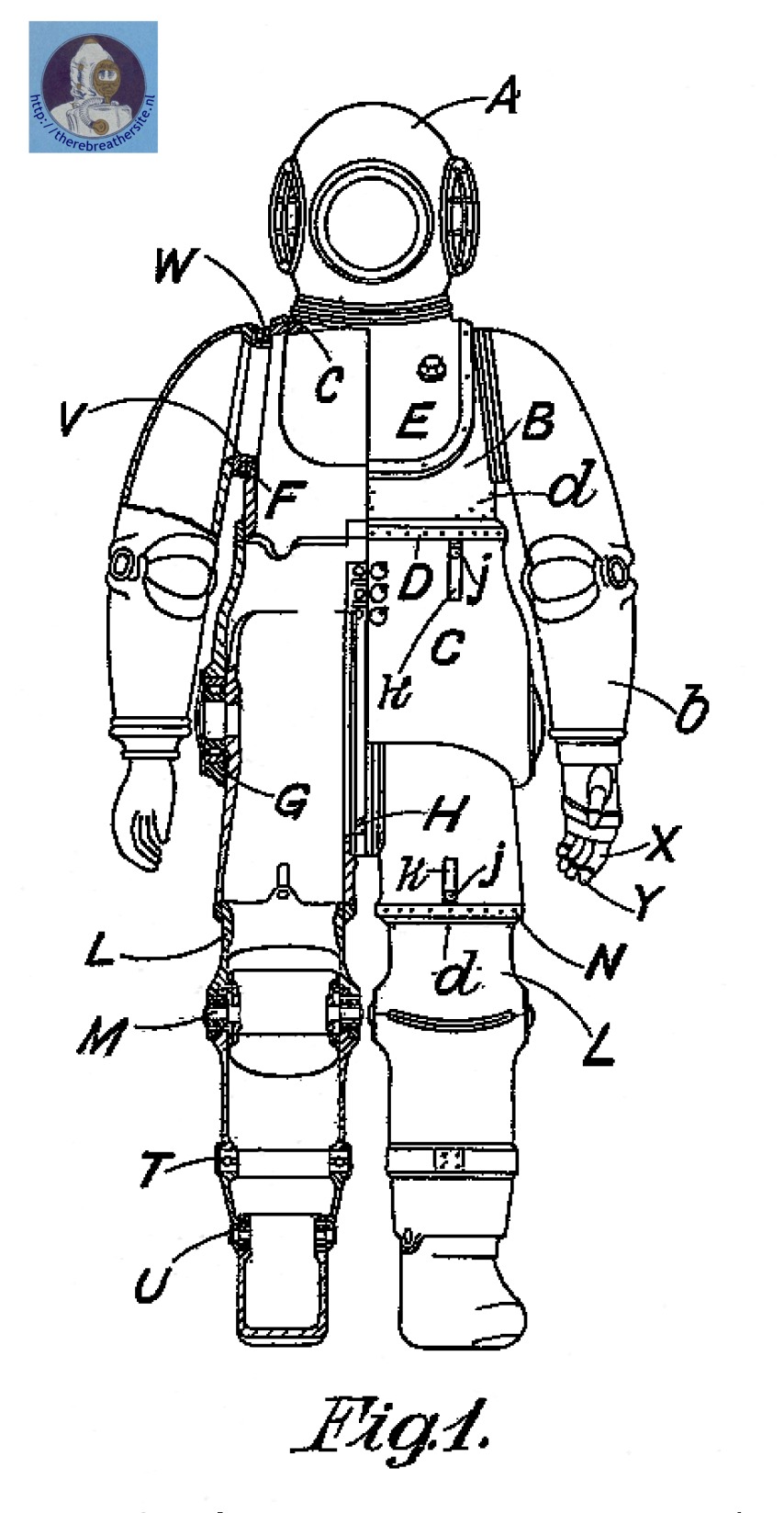
Verena Winifred Holmes (1889–1964), an English mechanical engineer and inventor, the first woman member elected to the Institution of Mechanical Engineers (1924). Verena patented a ridged Diving Suit or Diving Armor with great design quality.
1926
Bernhard Dräger
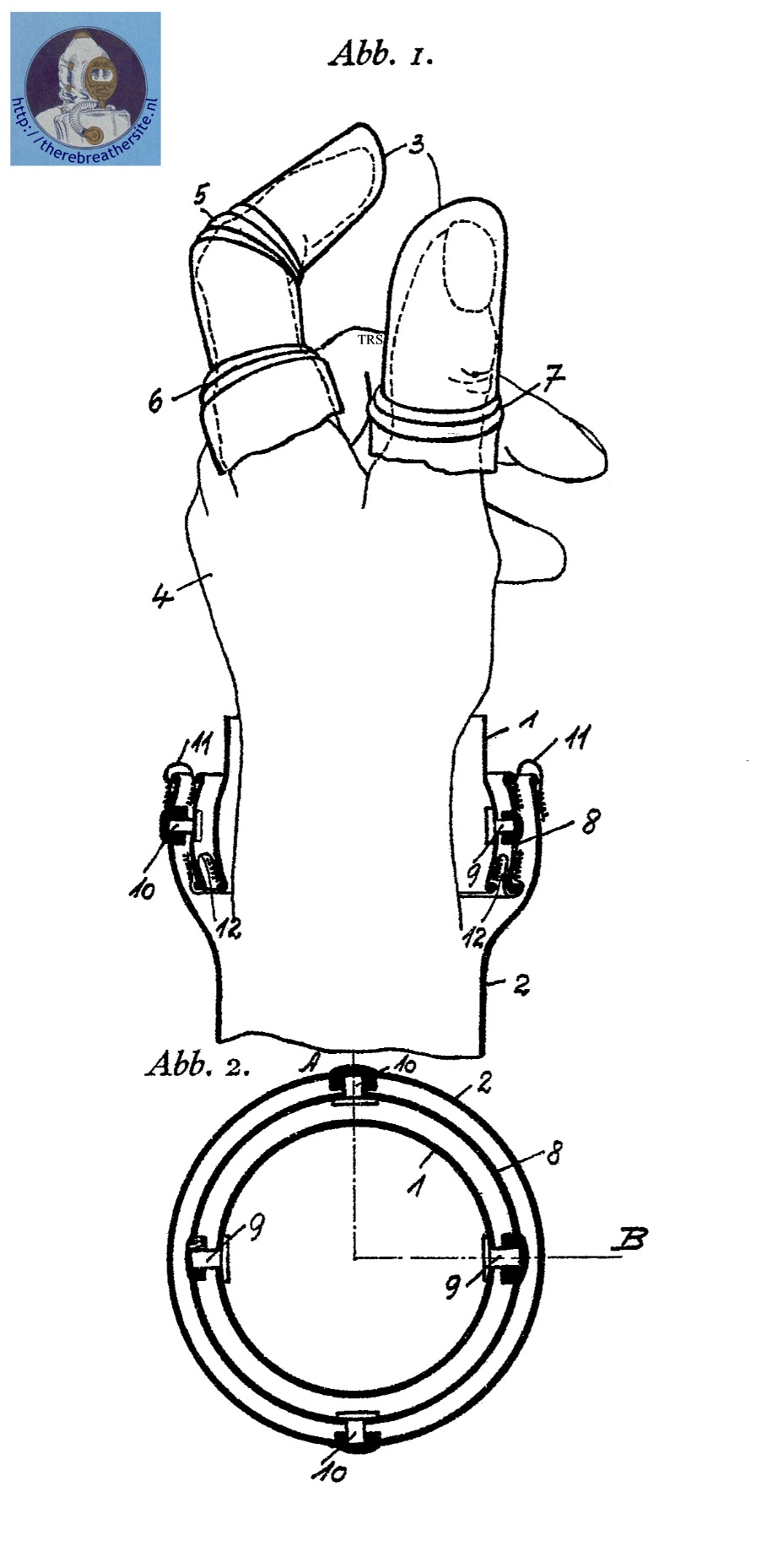
Approximately three years before Peress introduced the oil-filled hinge in 1929, Bernhard Dräger patented a cardan-type joint that formed a seal with two diaphragms.
1926
Hermann Ahrens Germany
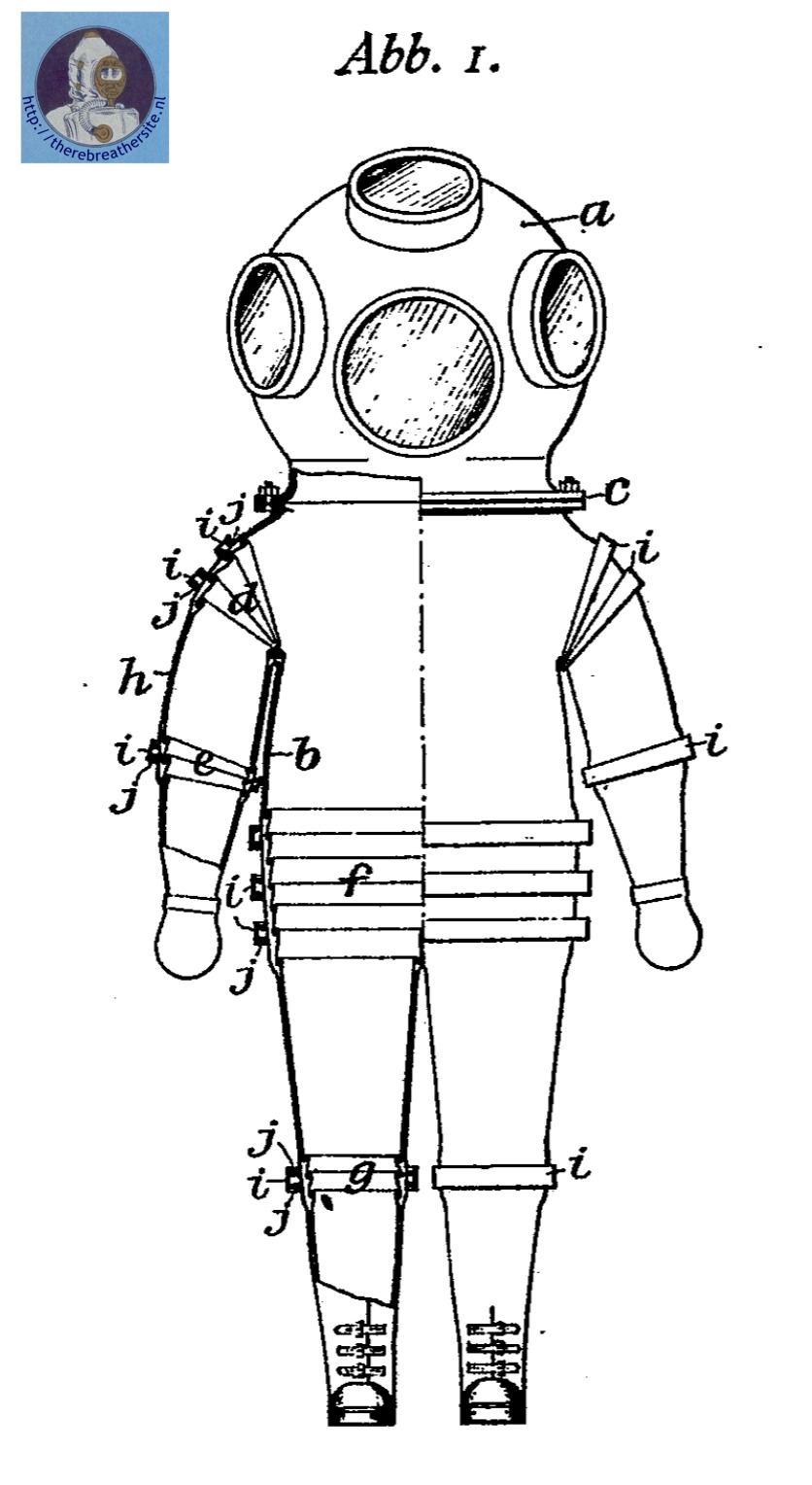
Once again, the concept emerges of cladding a metal suit with a rubber seal. Ahrens sees the problem that the rubber will be pressed between the hinge points with great force by the water pressure. Ahrens suggests solving this by keeping the rubber at the hinges away from the moving transition parts.
1928
Ernest Reginald Clifford
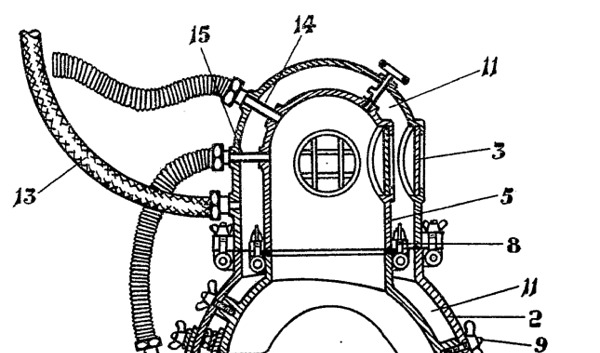
E.R. Clifford patented a divers’ dress comprises an inner and outer rigid corselet and an inner and outer rigid helmet, the space between forming an outer high pressure zone to support the external pressure, while the inner space form a relatively low pressure zone in which the diver breathes.
1929
Karl Hippsich

The suit by Karl Hipssich clearly shows great flexibility at the time the patent drawing was made. As far as we know, the suit did not become a great success, which is highly doubtful with today’s knowledge. The rings that slide over each other would certainly have jammed under the water pressure at greater depth and none of the hinges would bend or rotate. Nothing more than the patent has been found.
1930
Vivian Roy McBride
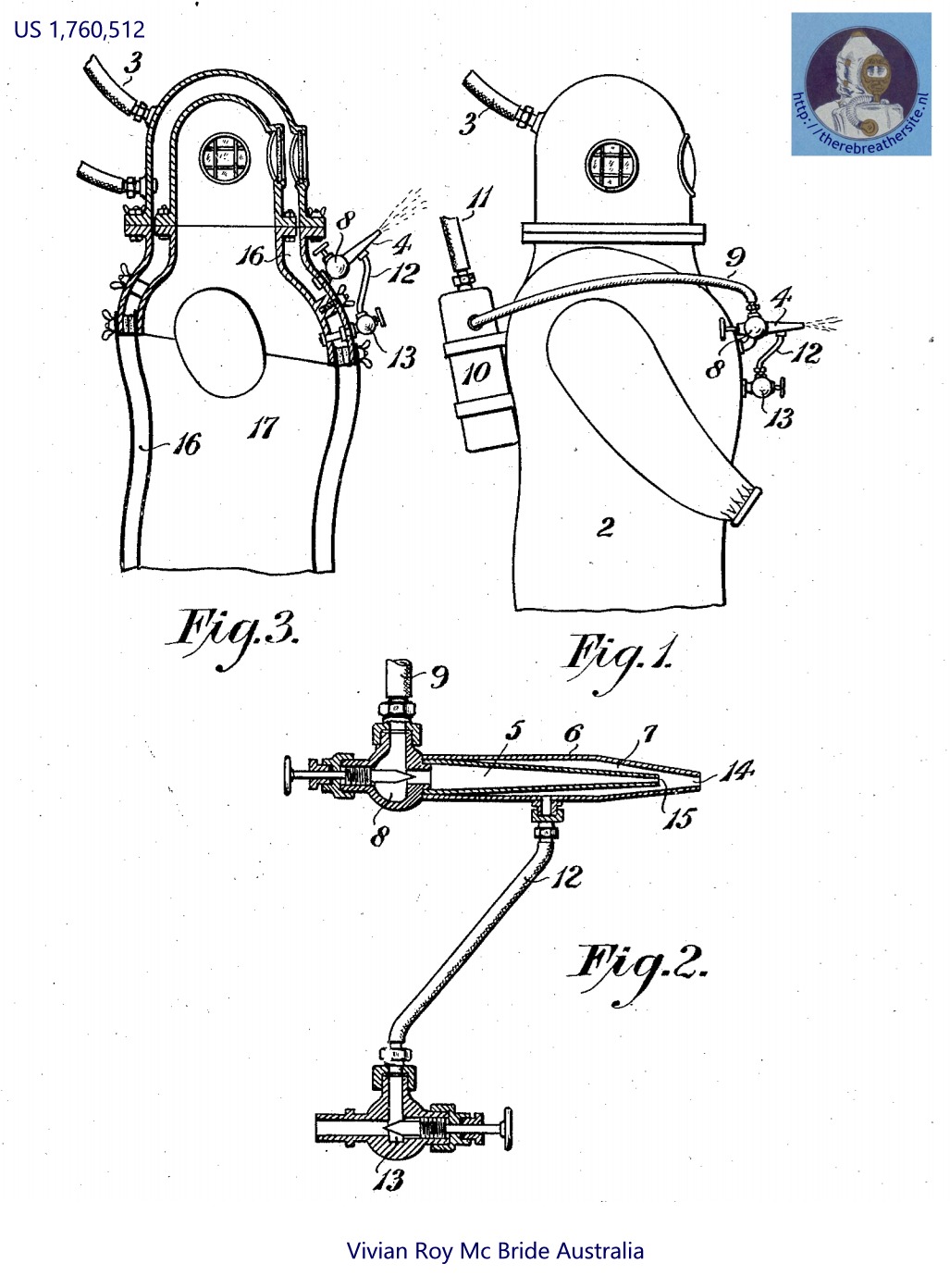
The invention of the Australian McBride concerns an injector type air pump with which the inventor can increase the low pressure of the exhaled air in the inner suit of a diver.
1930
Artiglio and SS. Egypt

In May 1922 P&O’s steamship Egypt sunk forty miles off the coast of France with a treasure of gold worth more than a million pounds sterling in her strong room. This the story about the Artiglio and Egypt
1933
Carl Wiley and SS. Islander
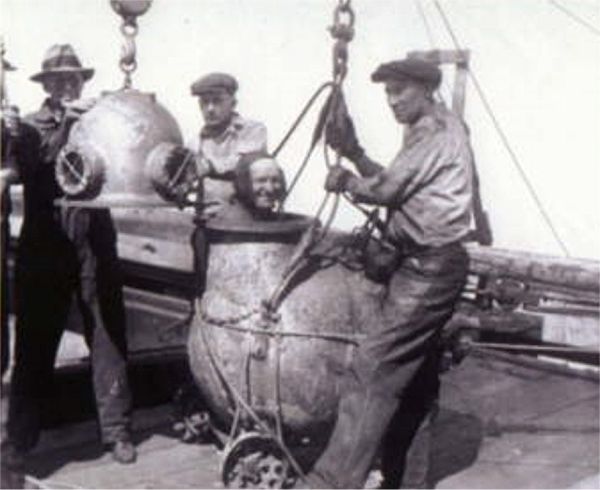
The Wiley “Bell” is not a bell. It is a atmospheric diving apparatus. You could call it a one man submarine. Carl Wiley and his companion inventor Elbert H. Wiley patented their invention in 16-12-1931.
1934
Connelly Iron Mike

Iron Mike was built in the early 1930s by the Empire Marine Salvage and Engineering Corporation of New York City, which was headed by Thomas P. Connelly.
